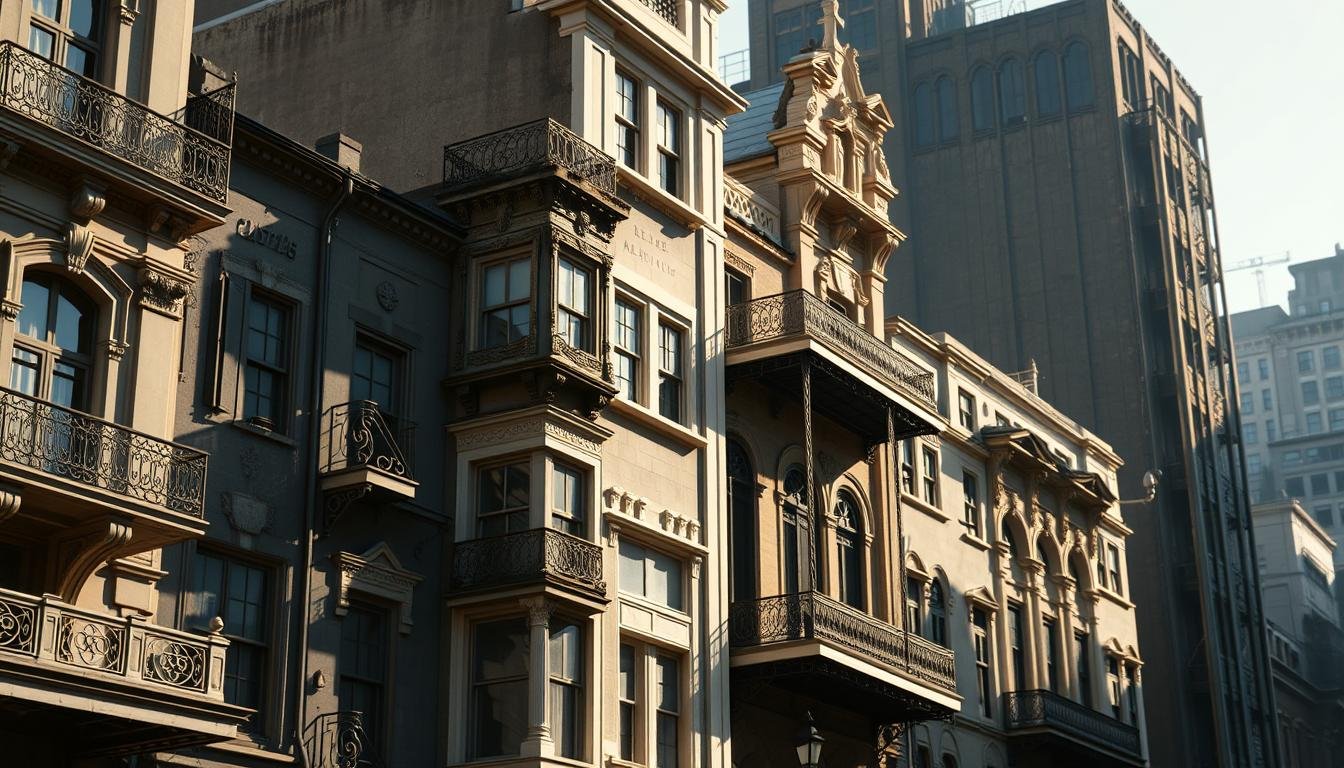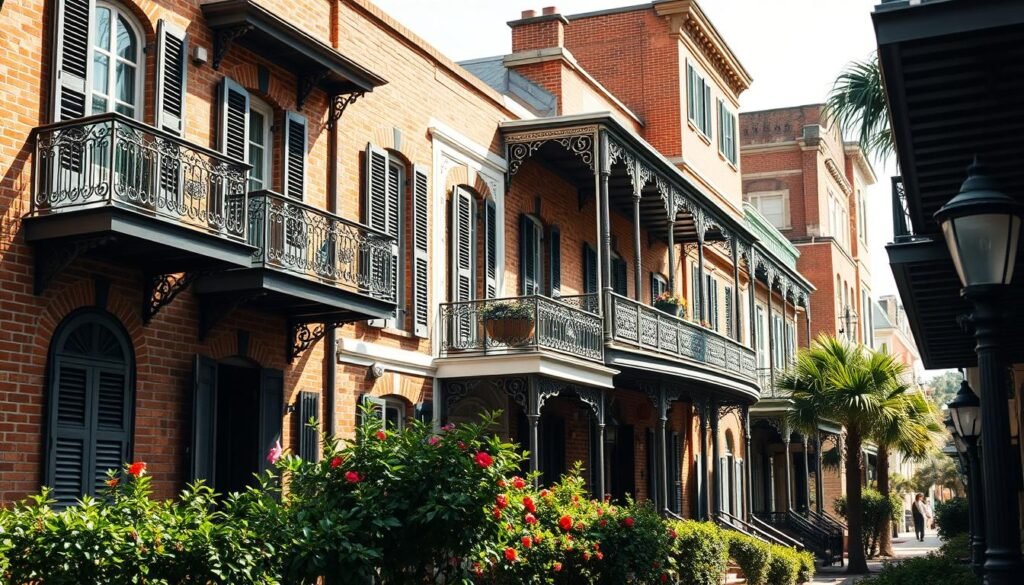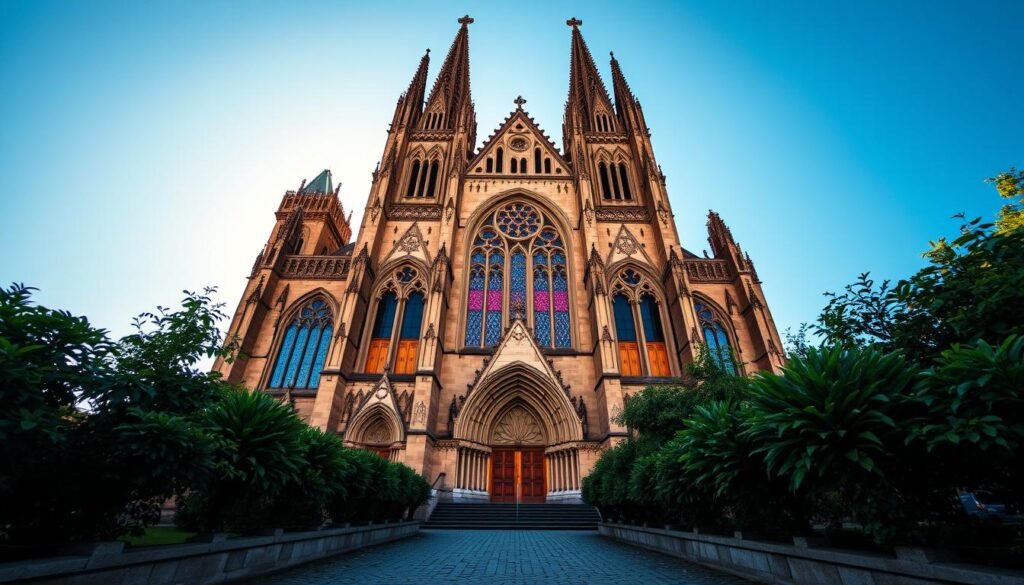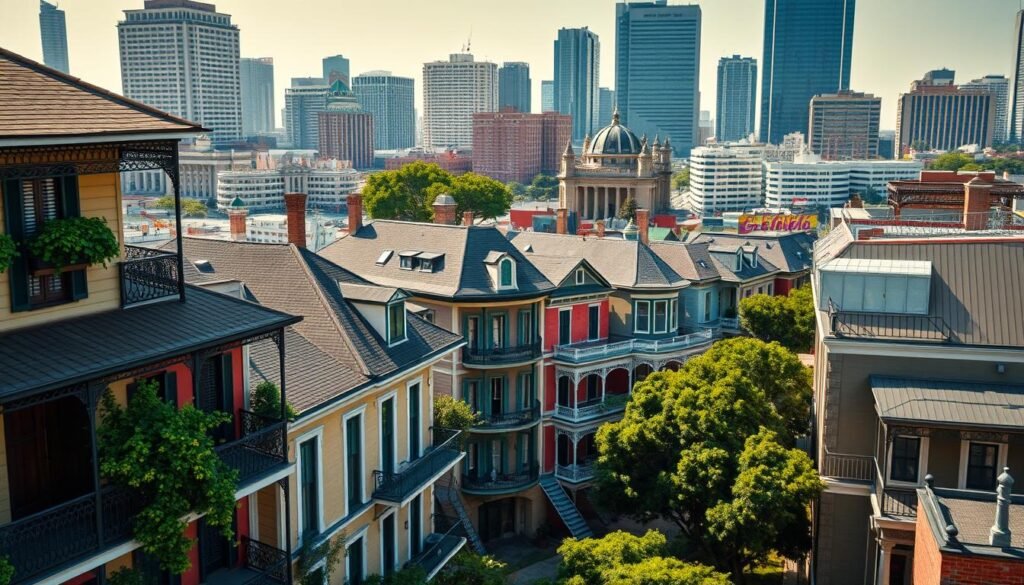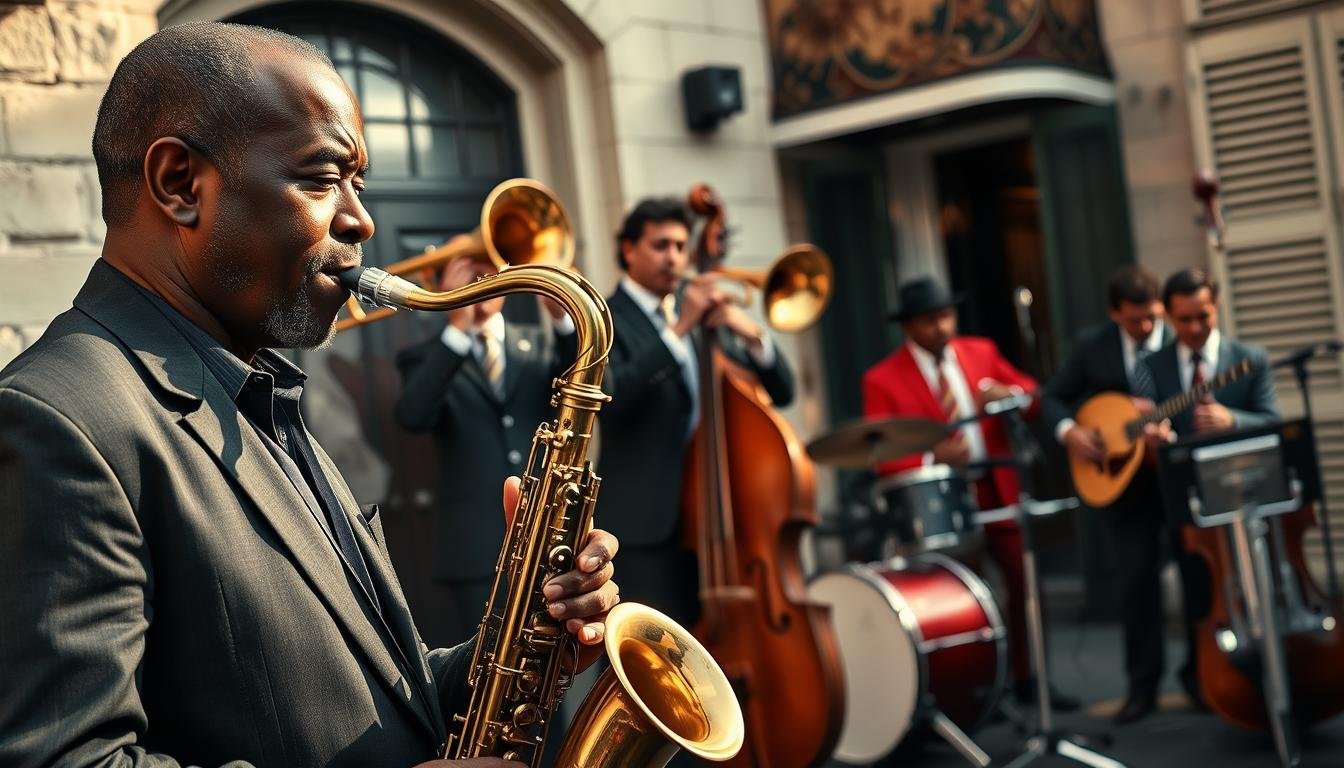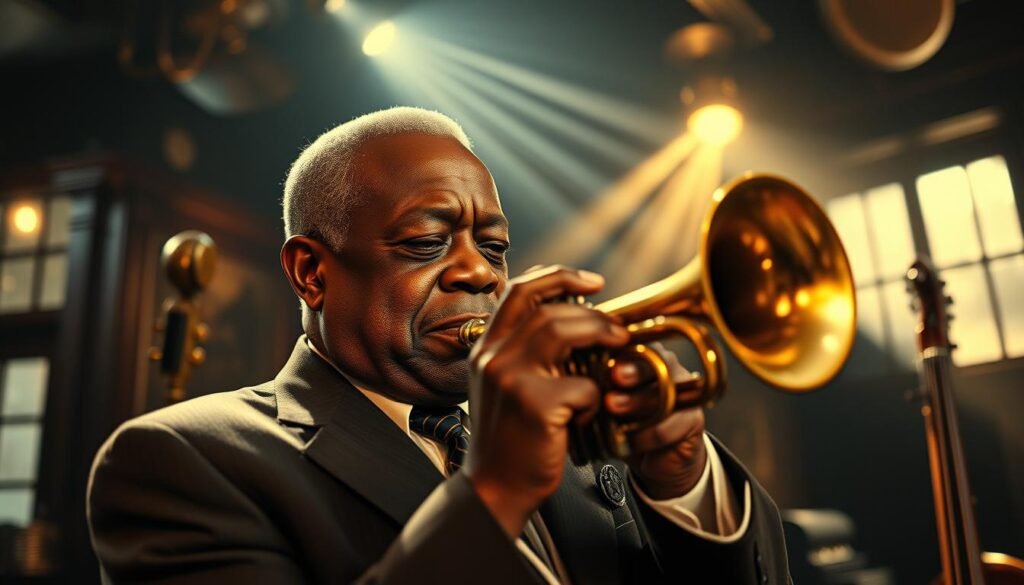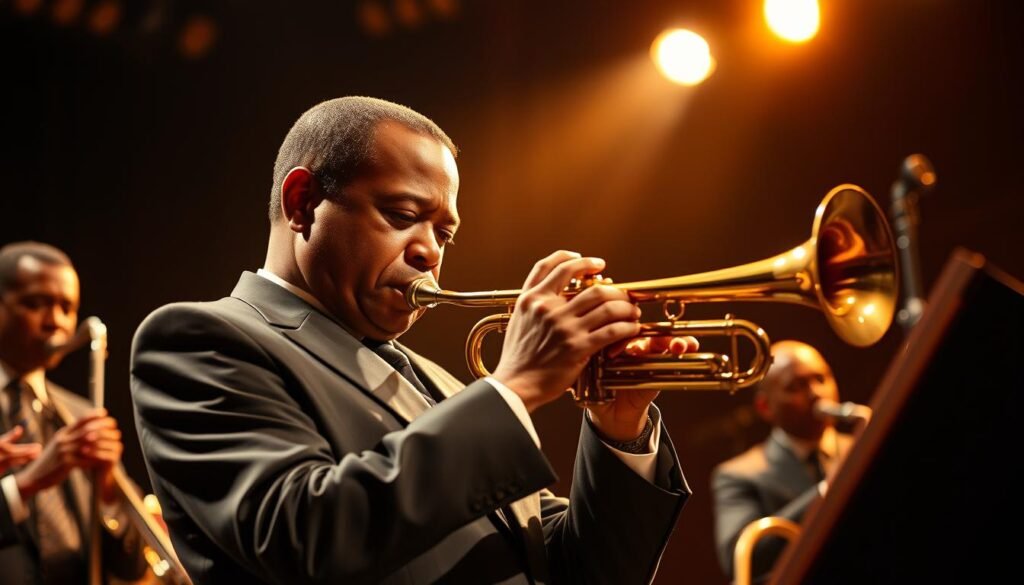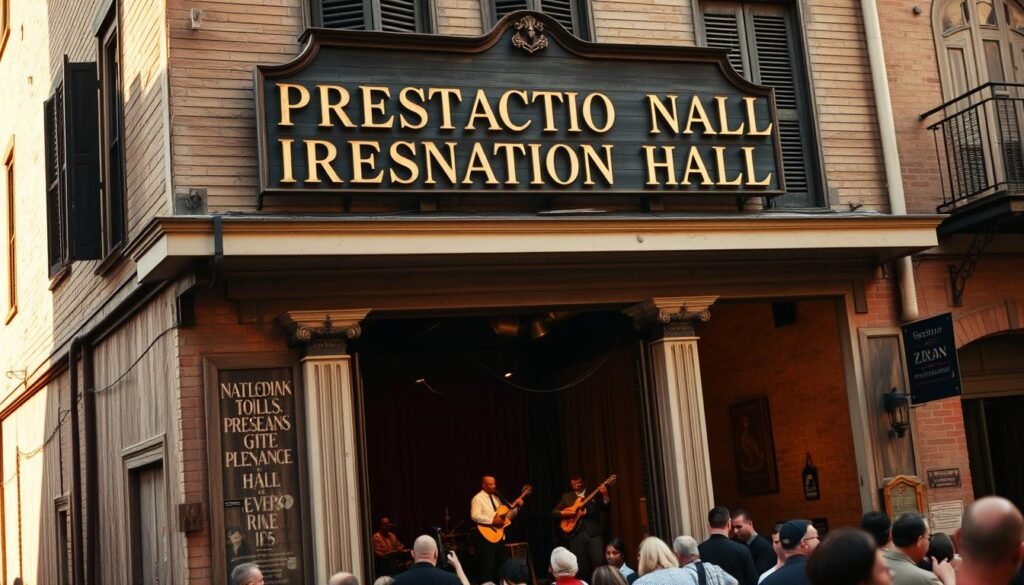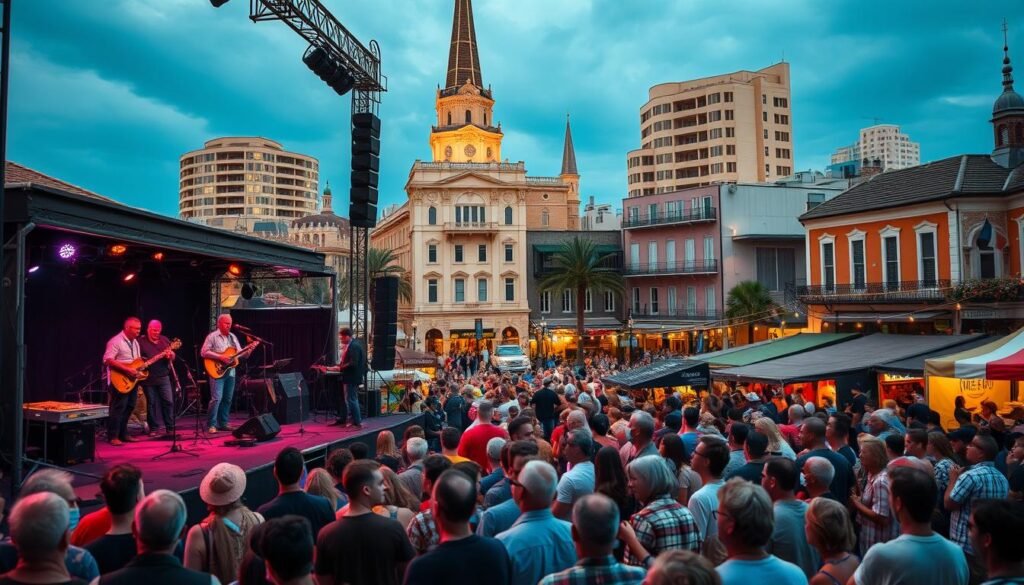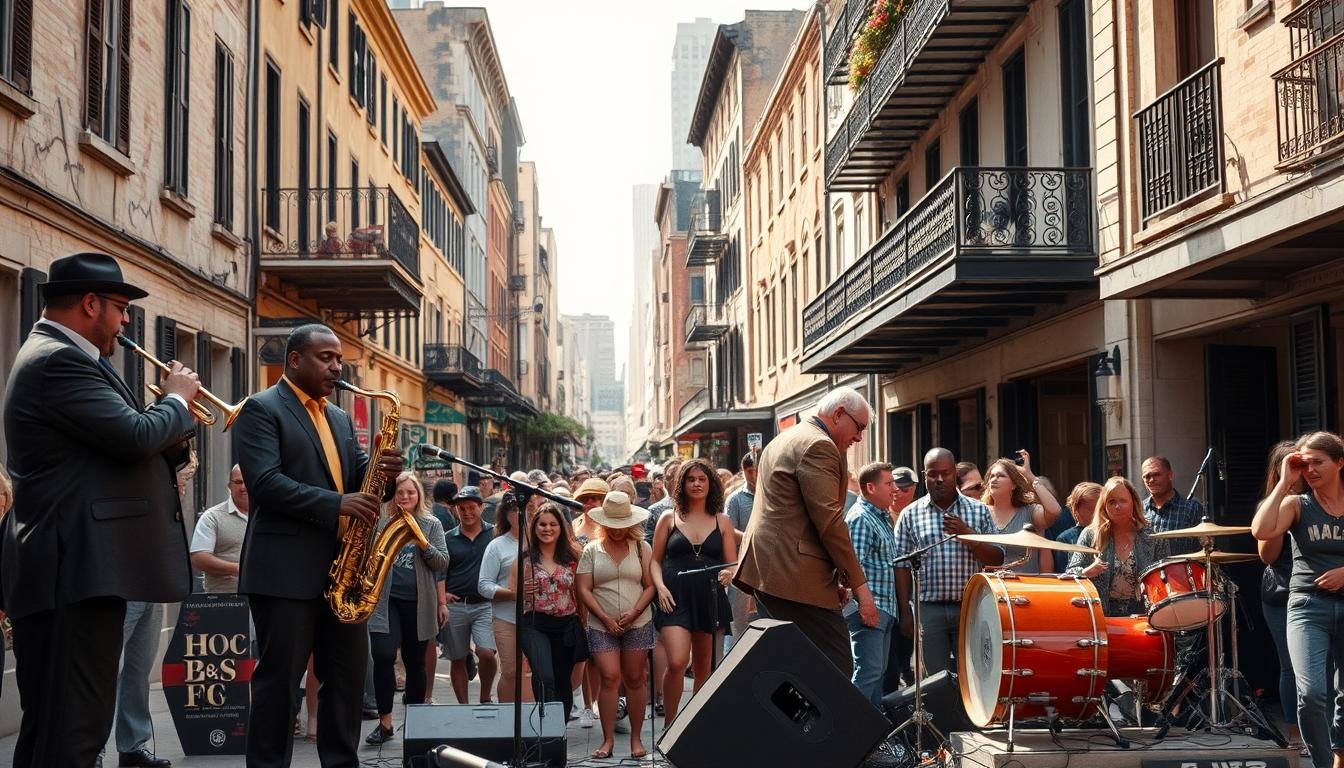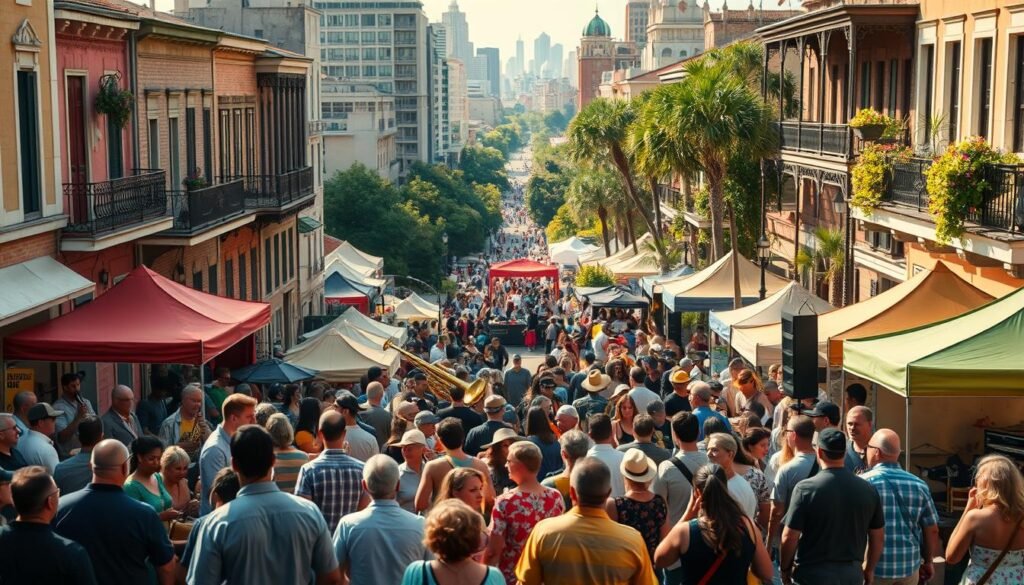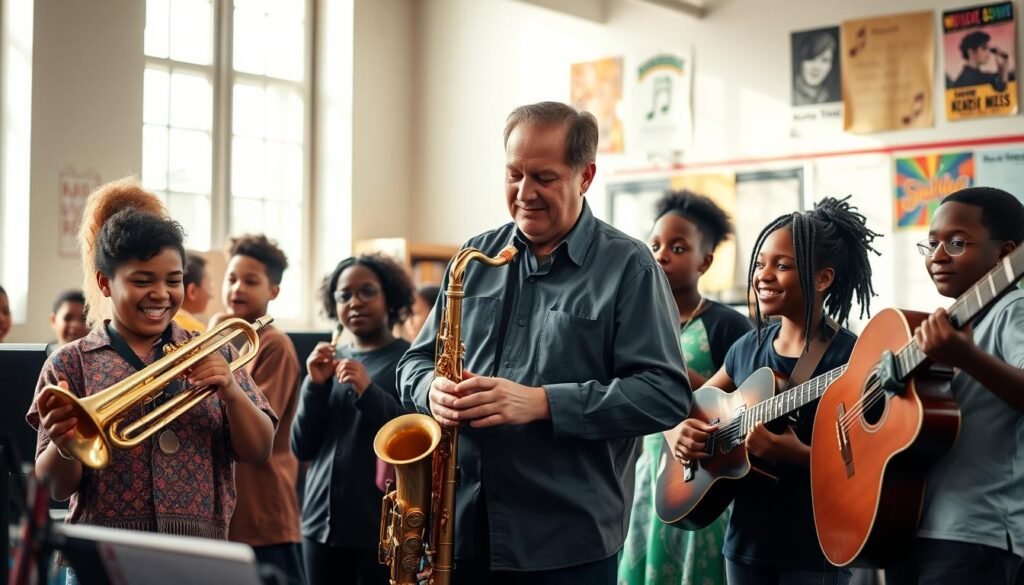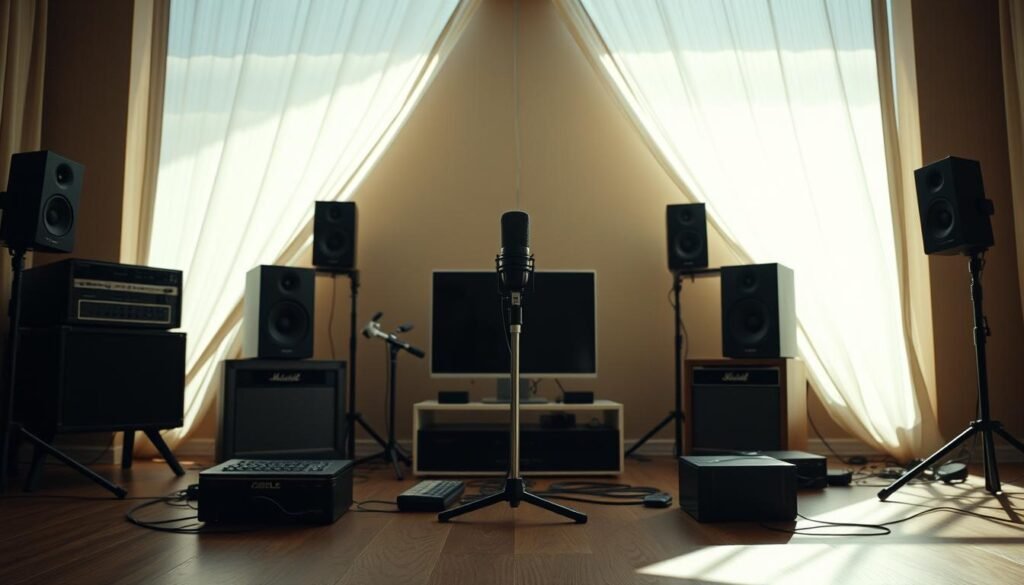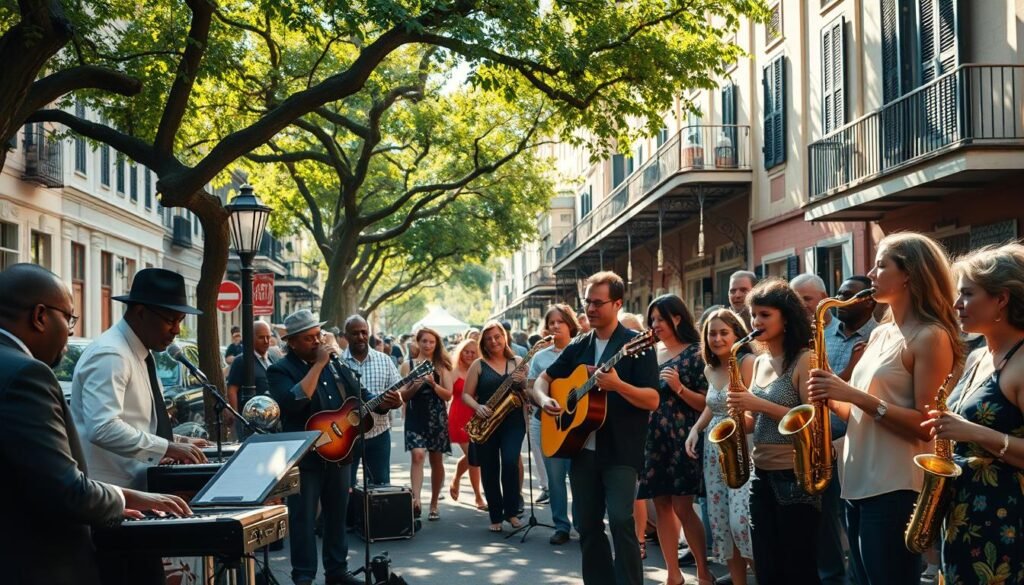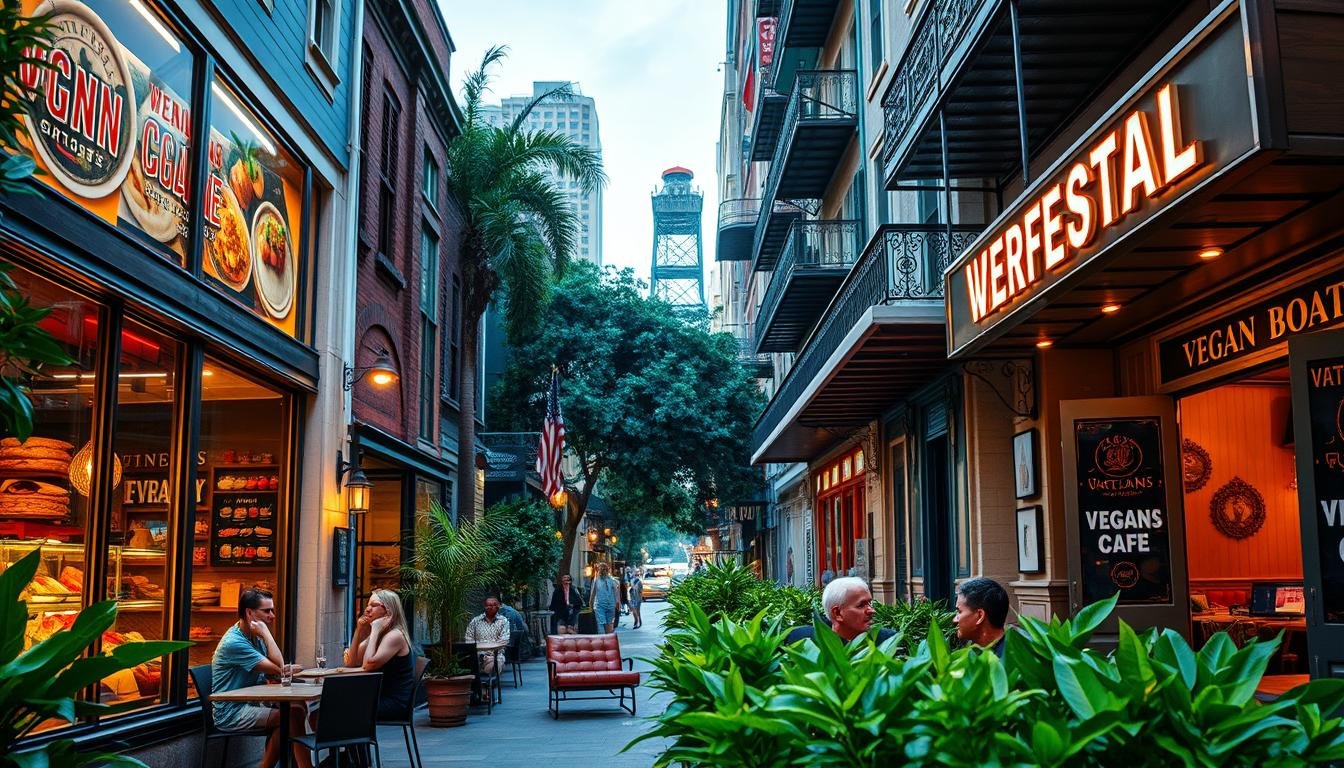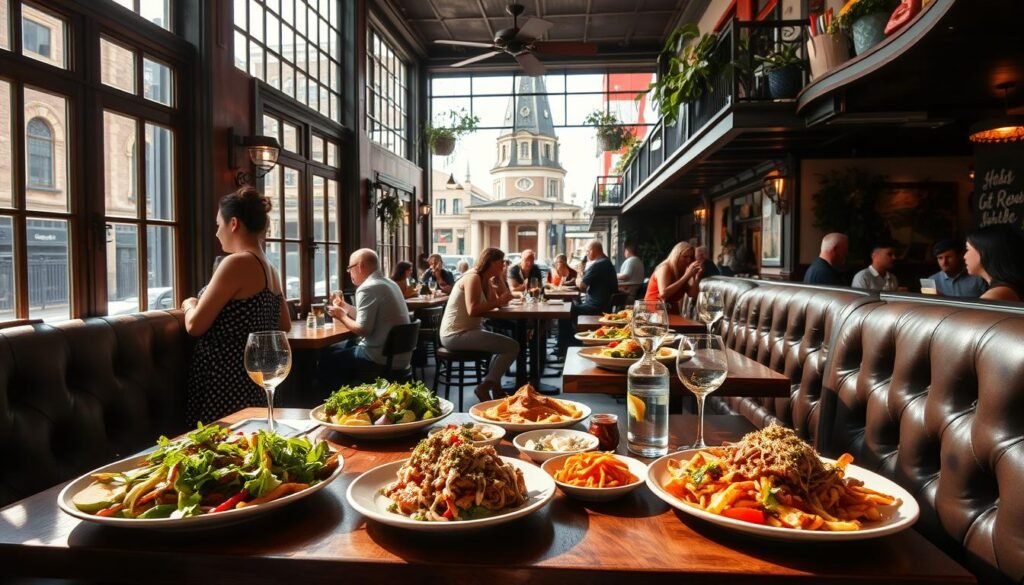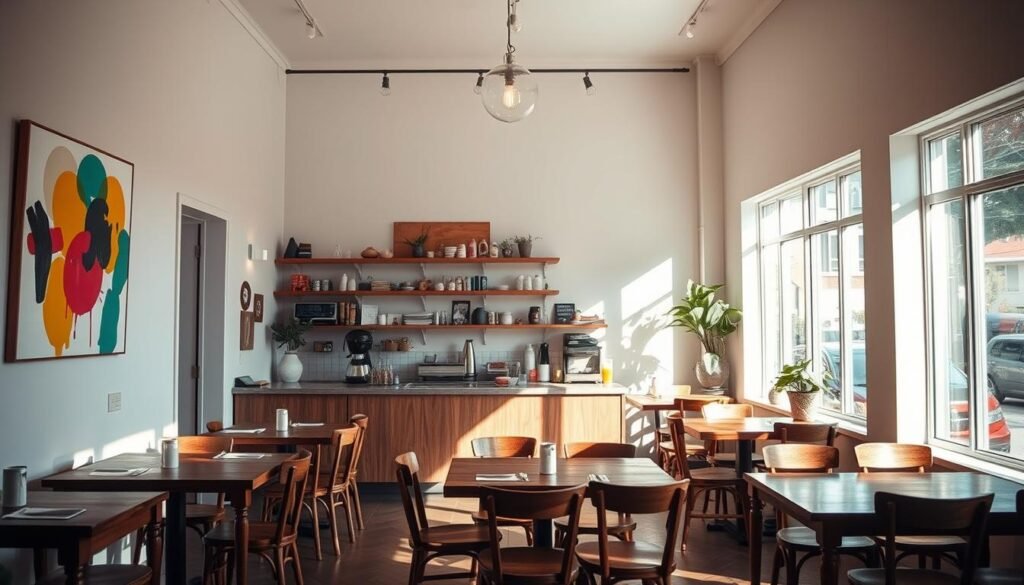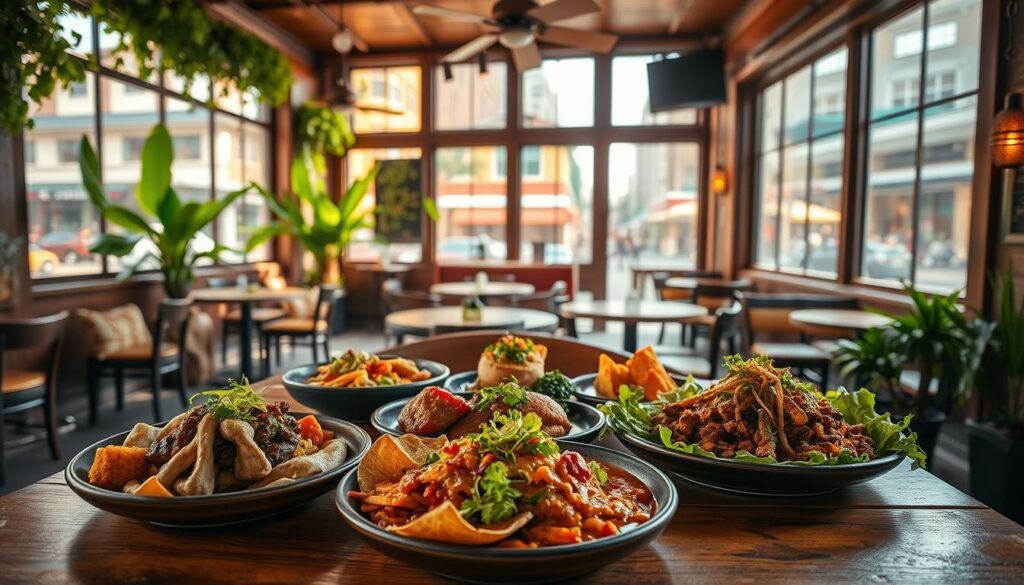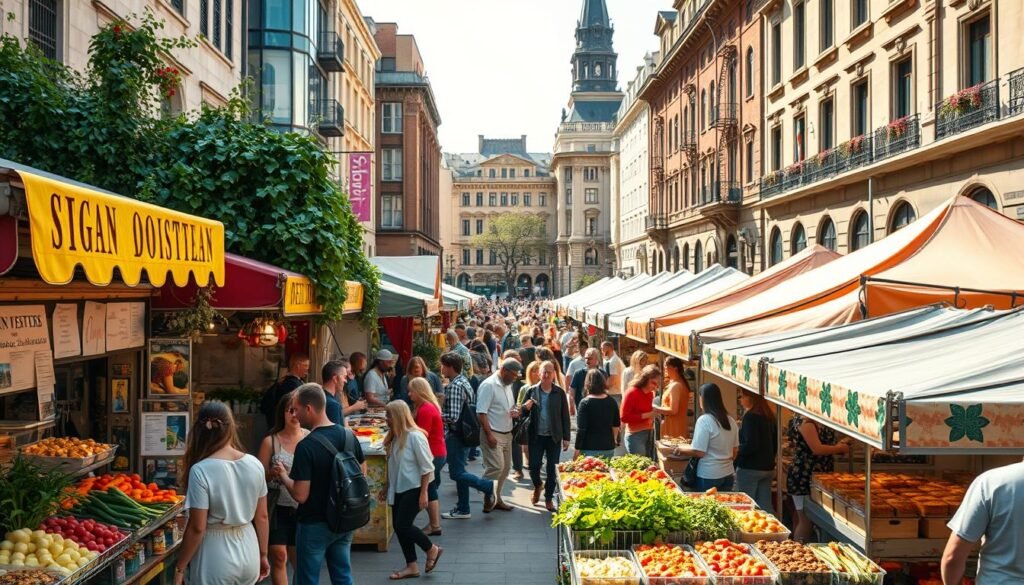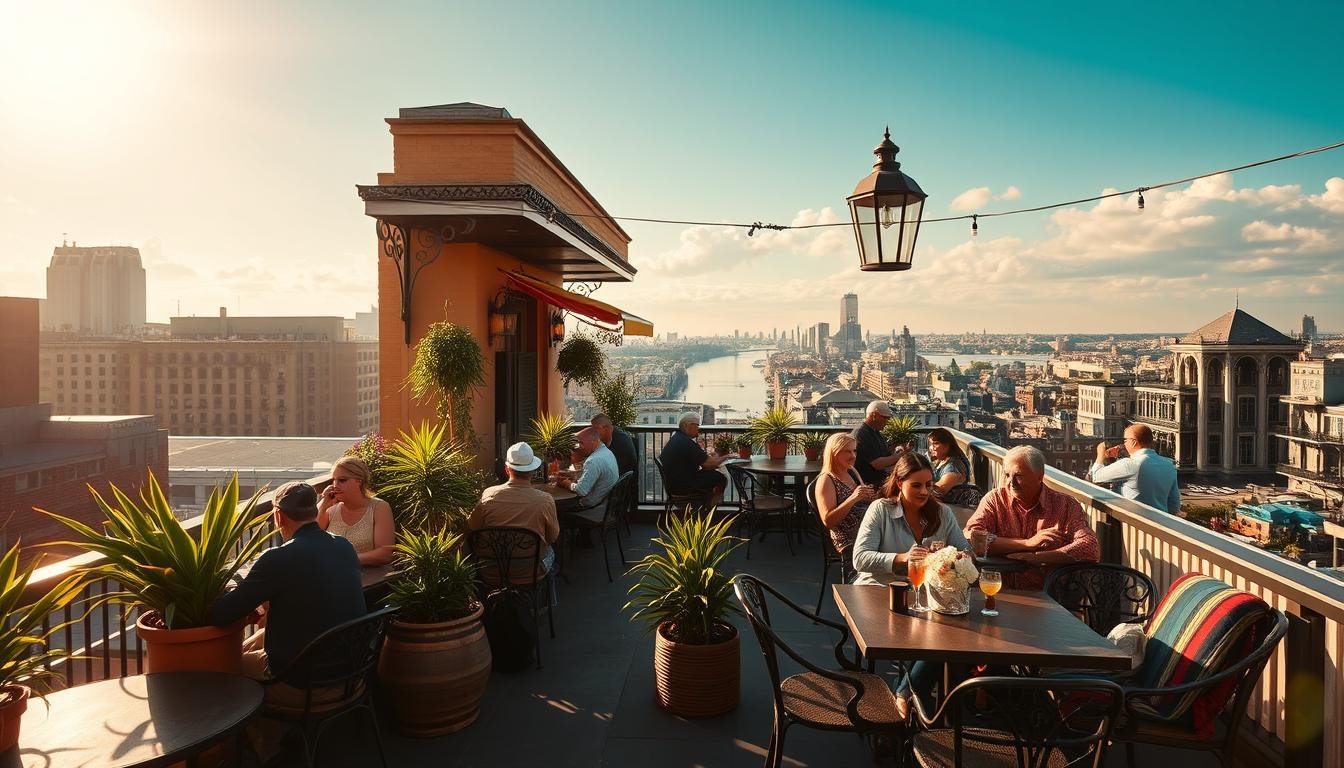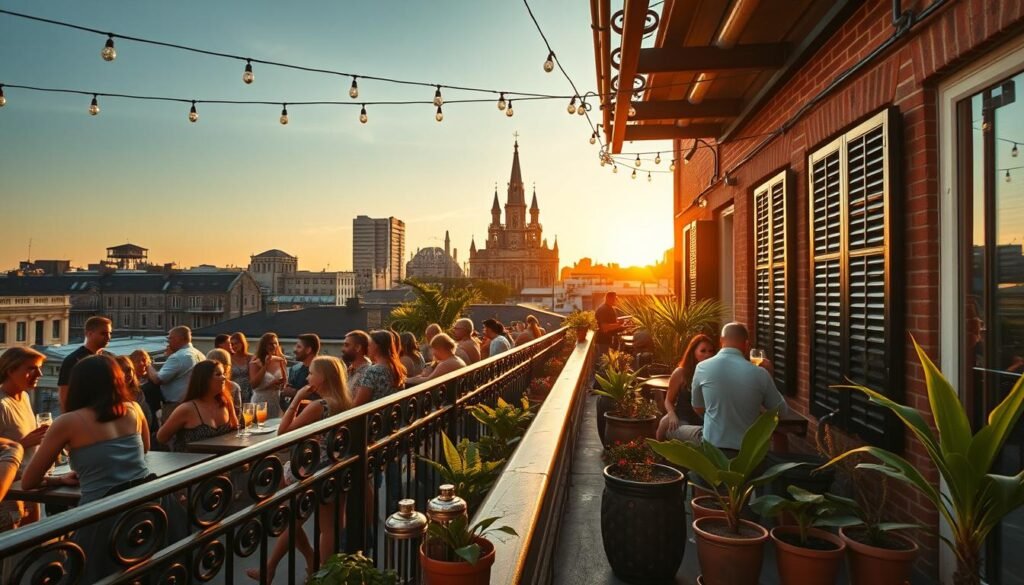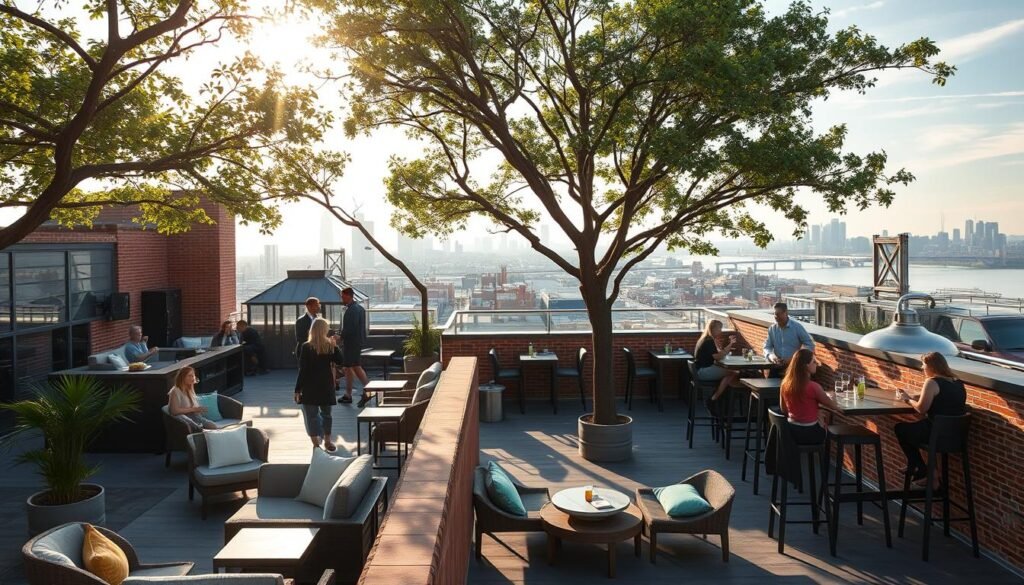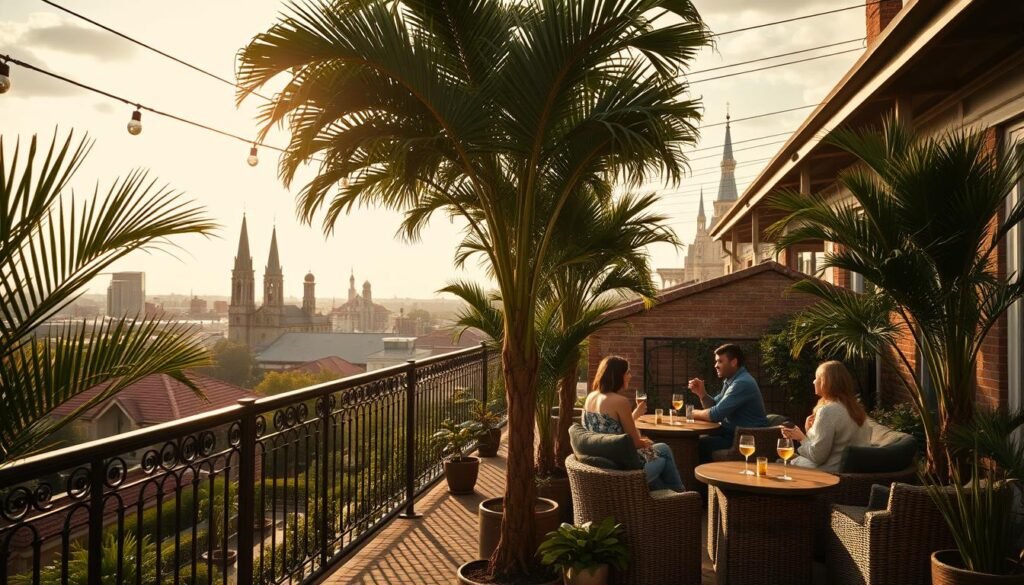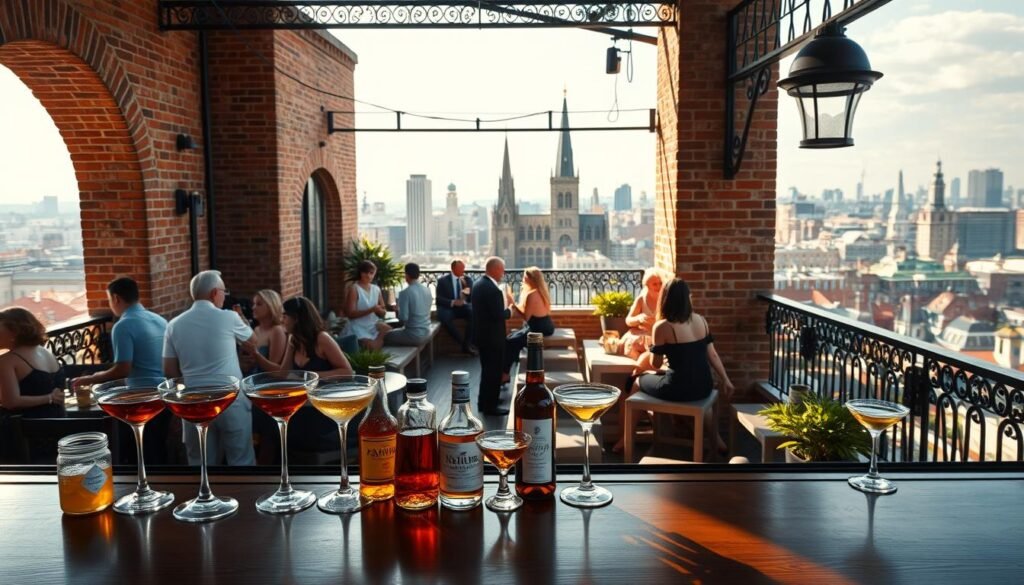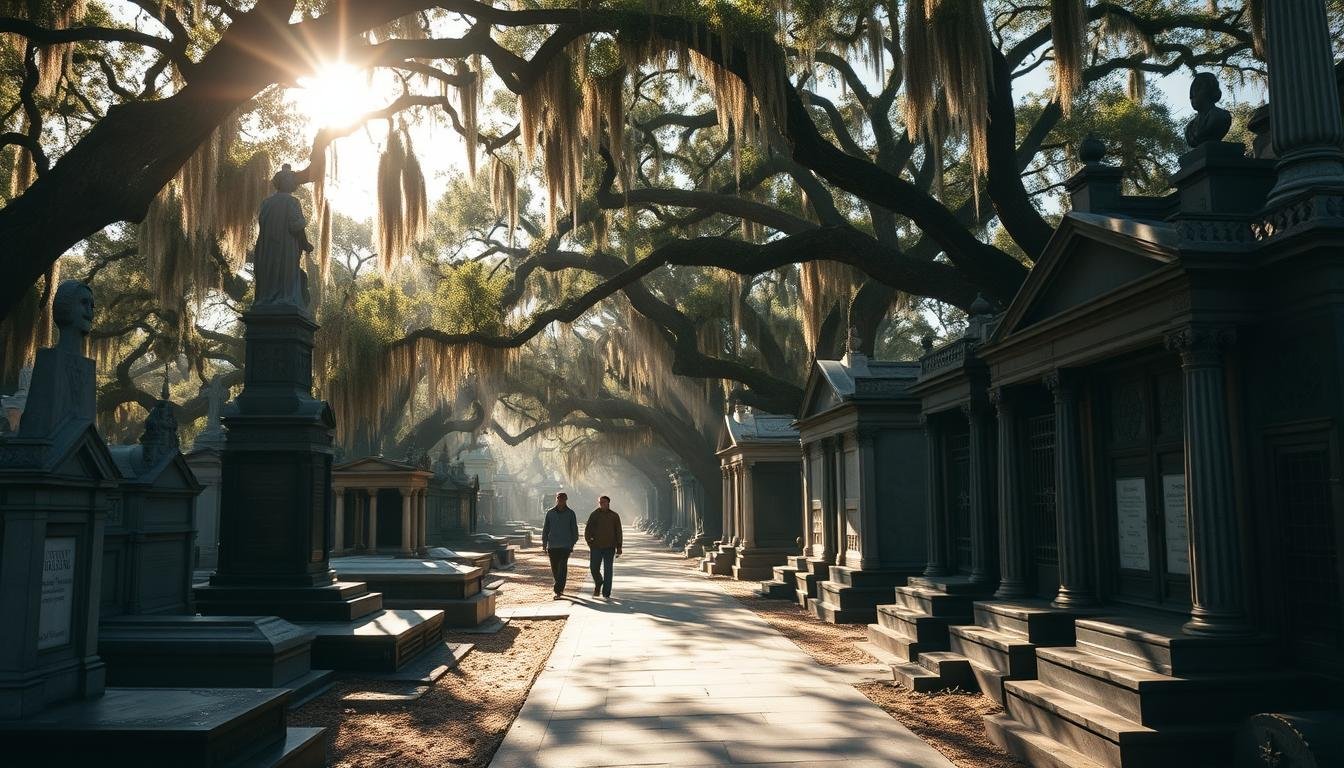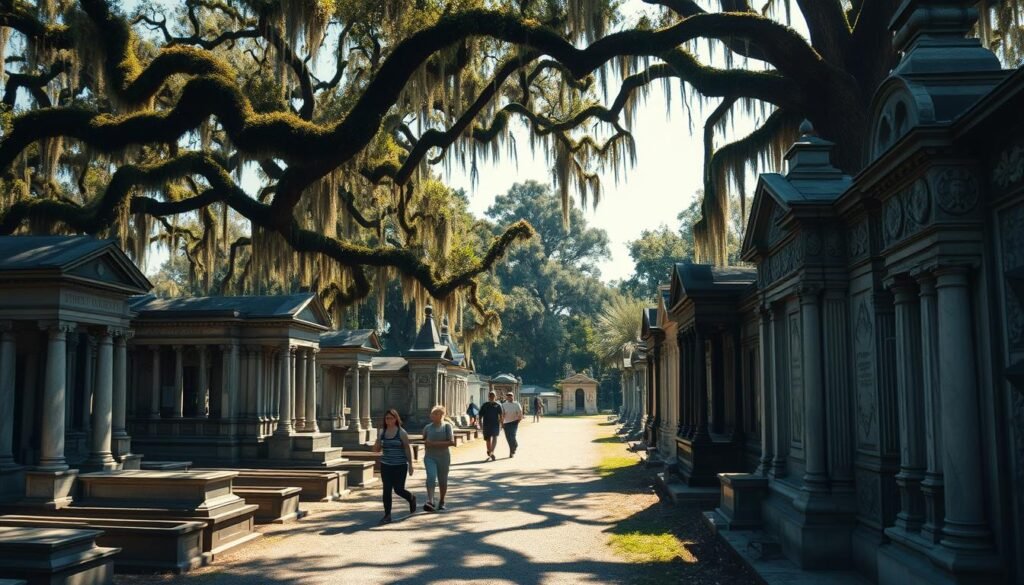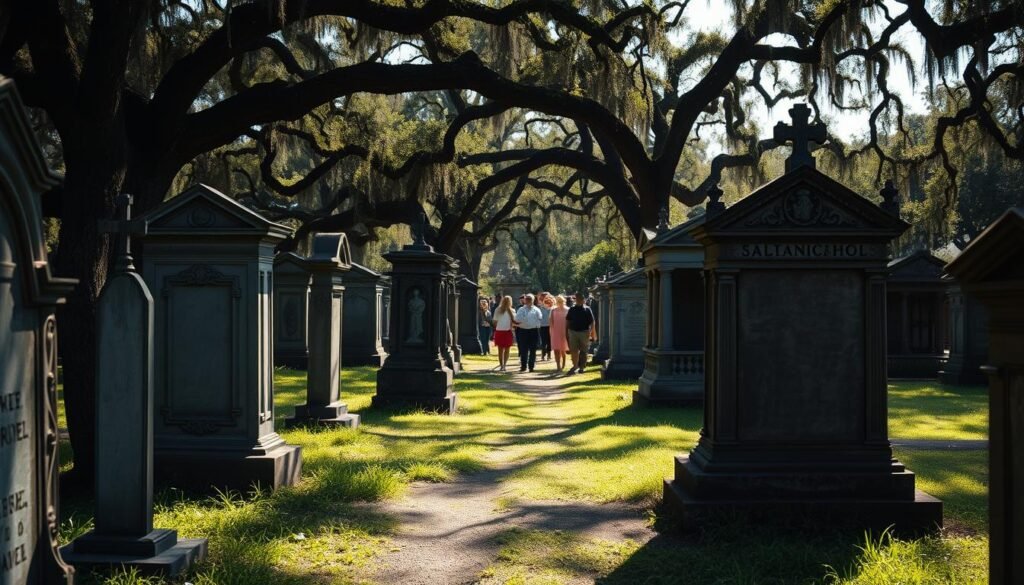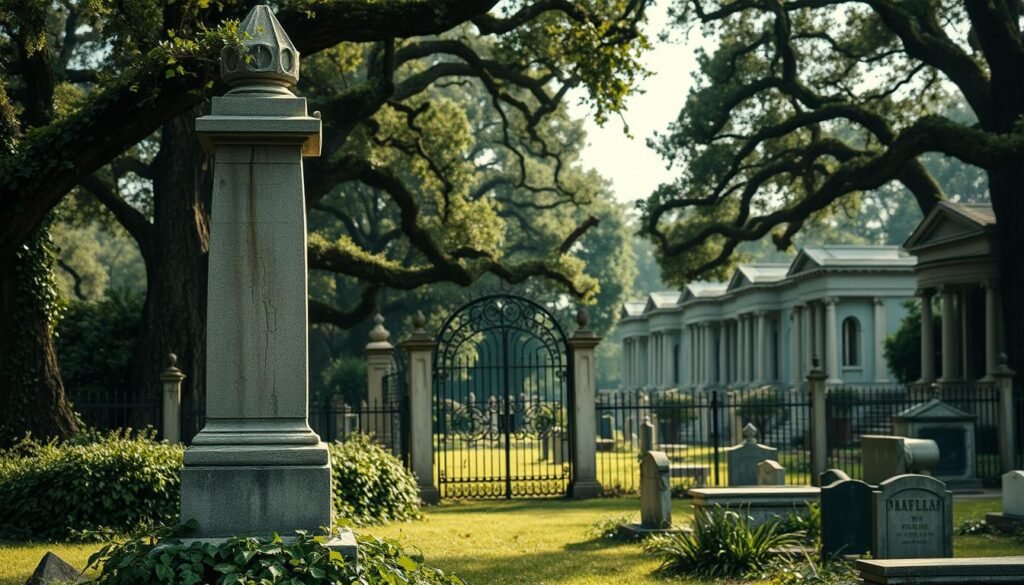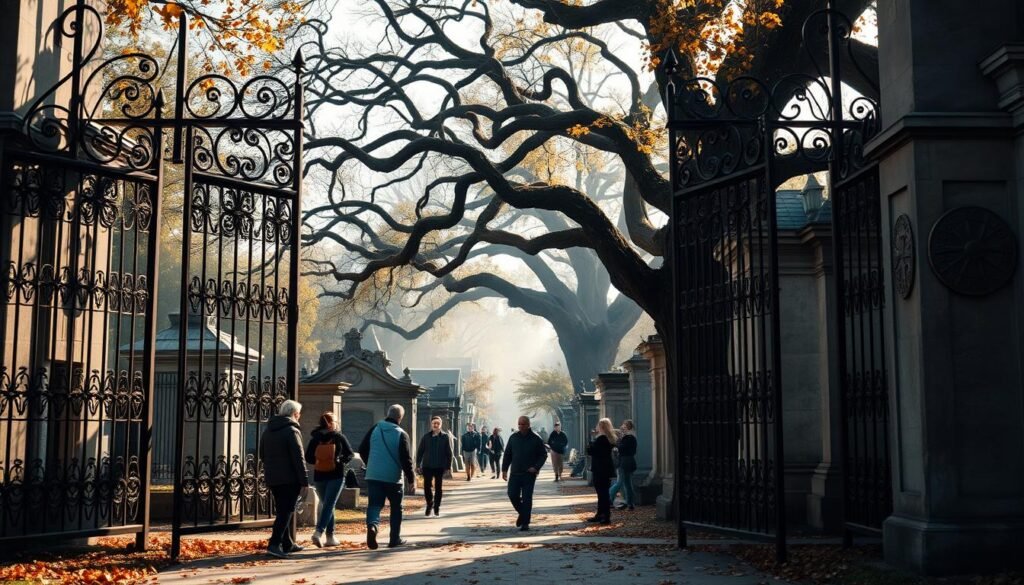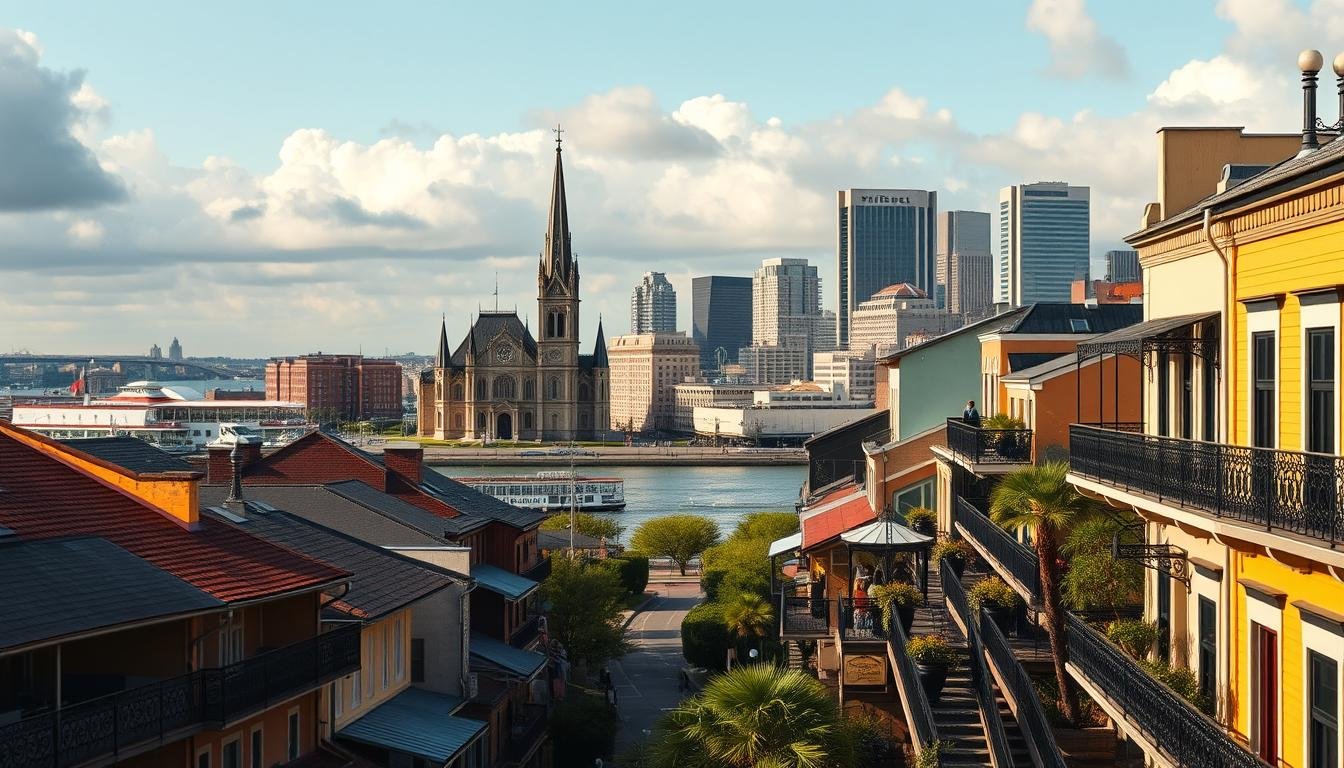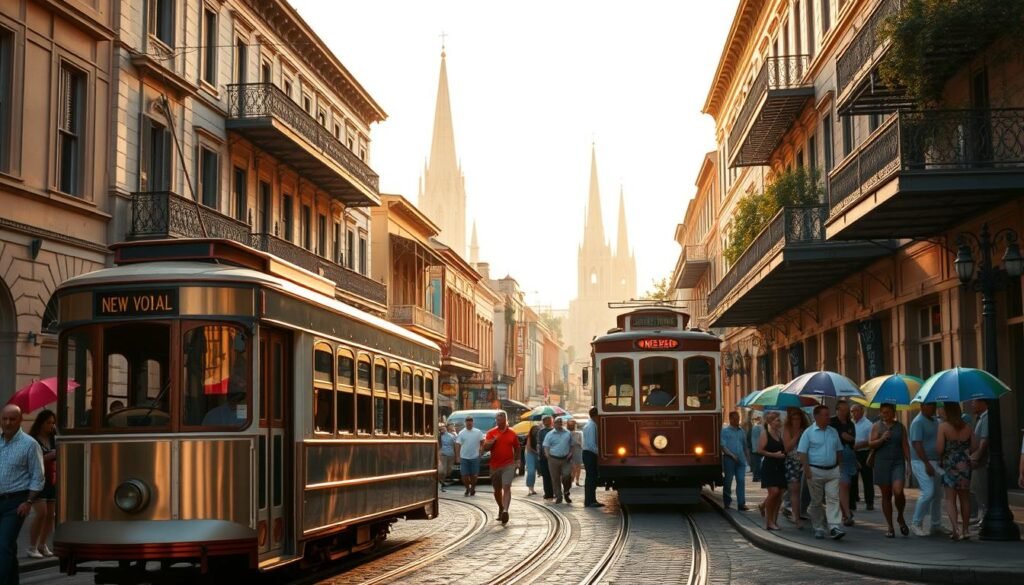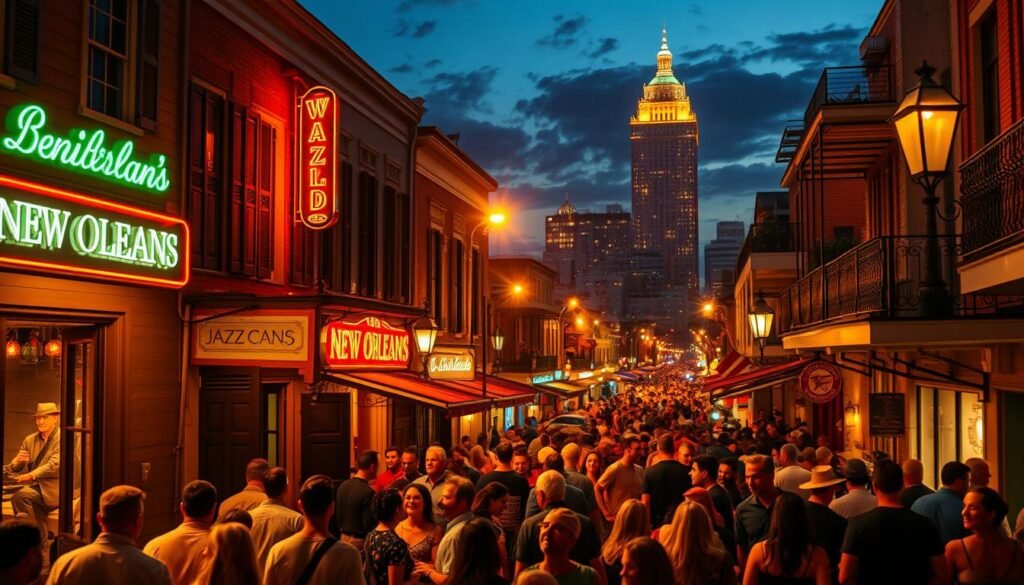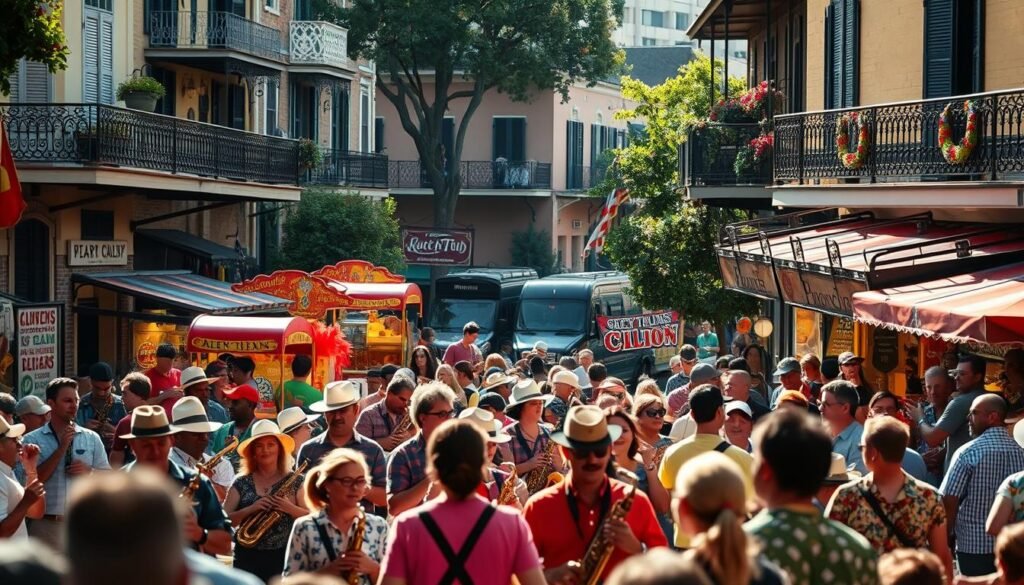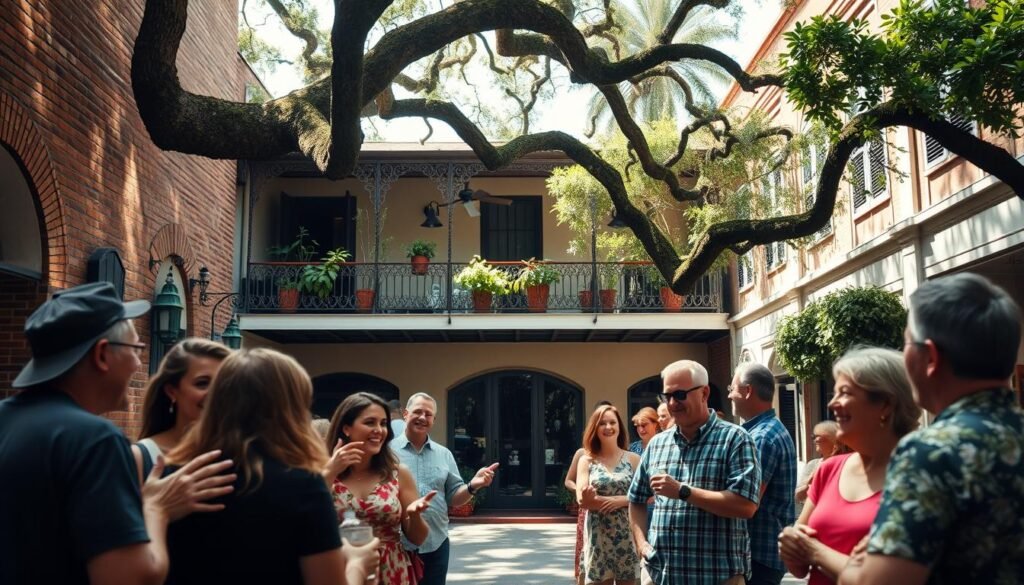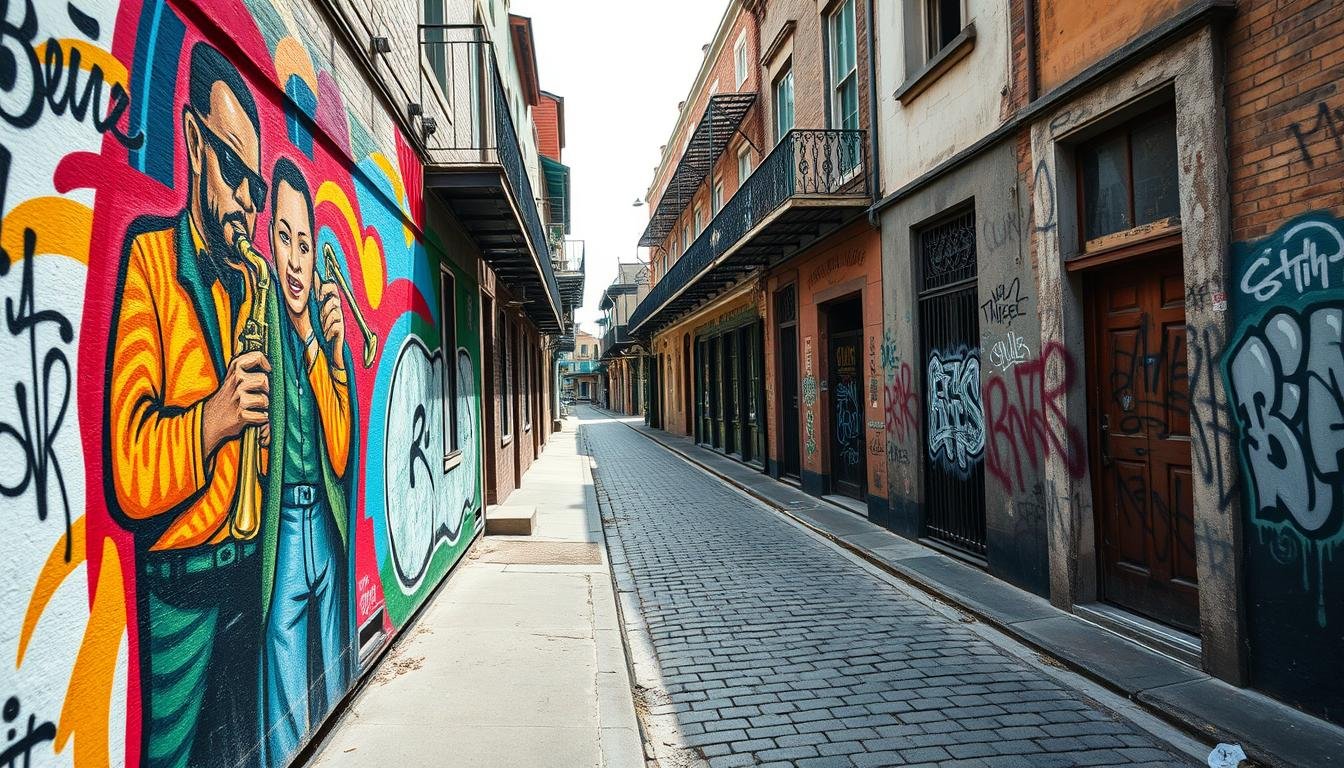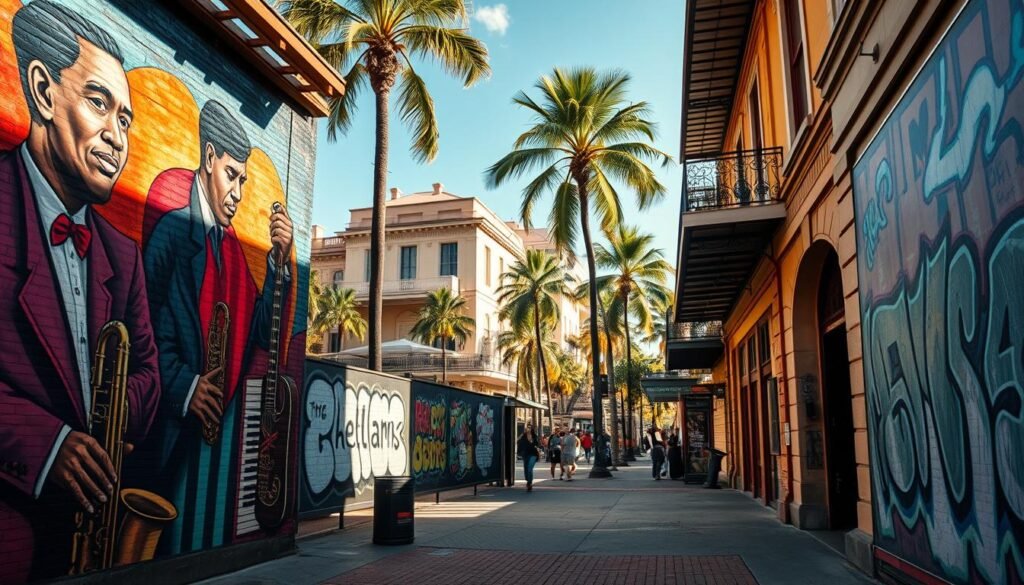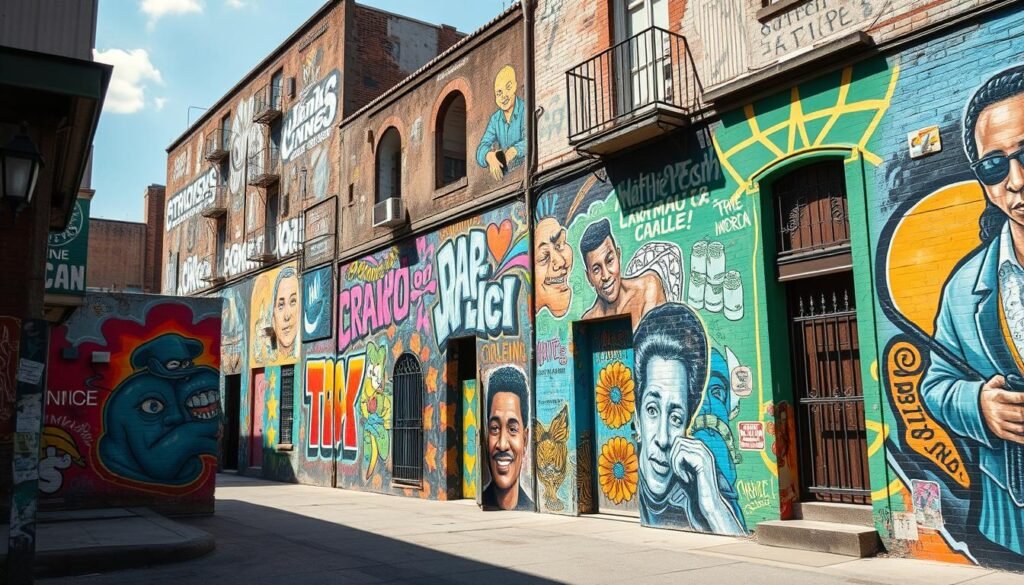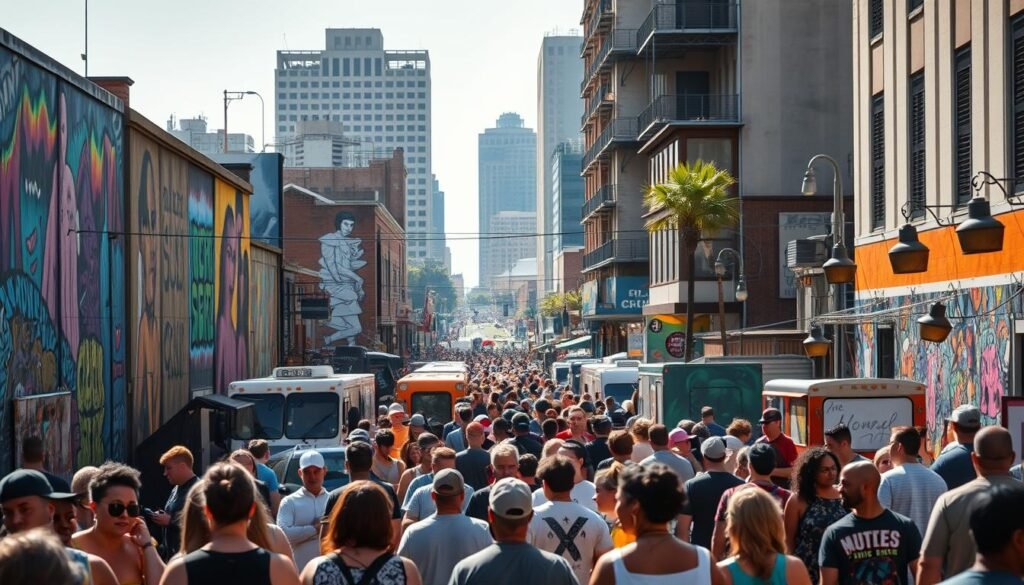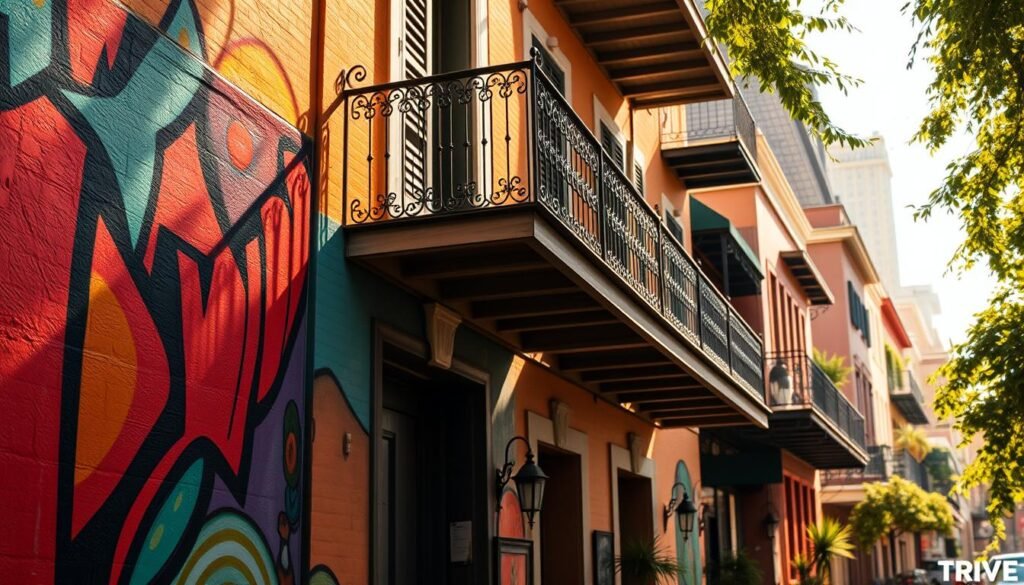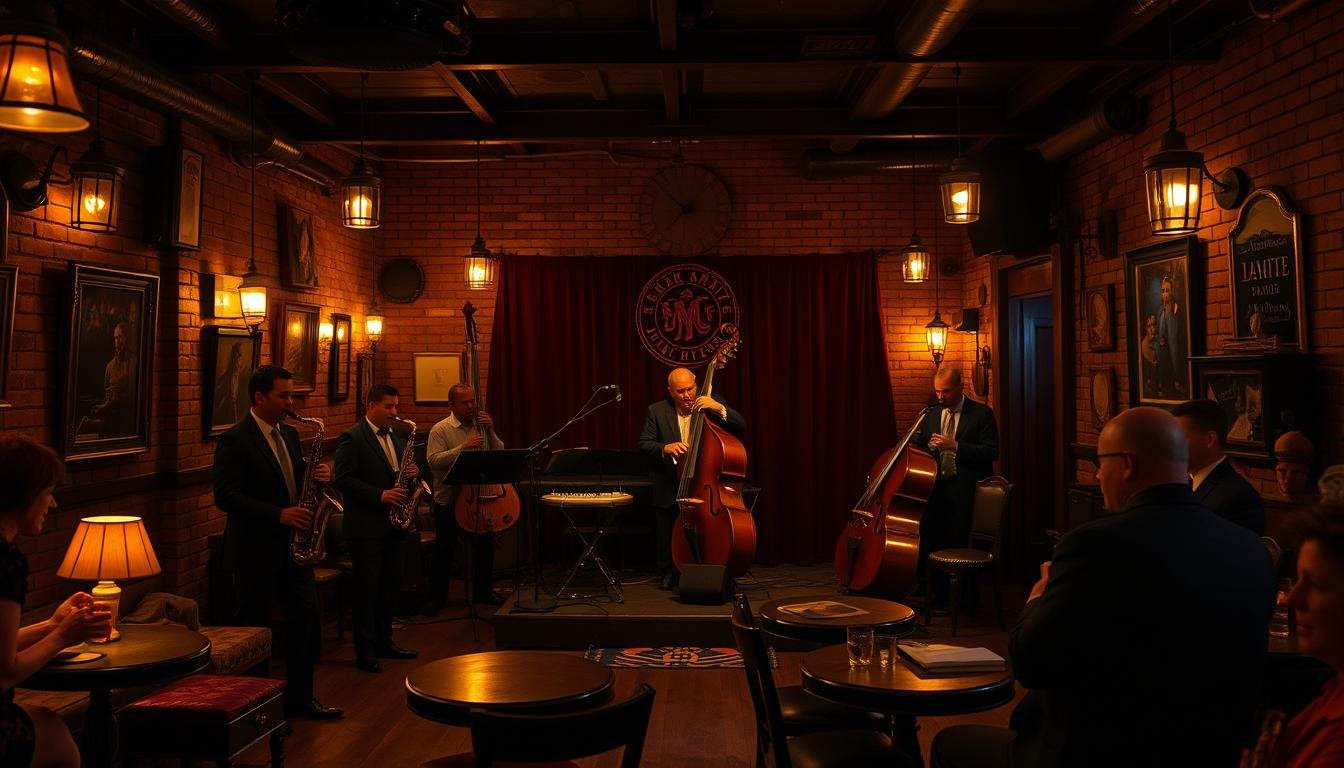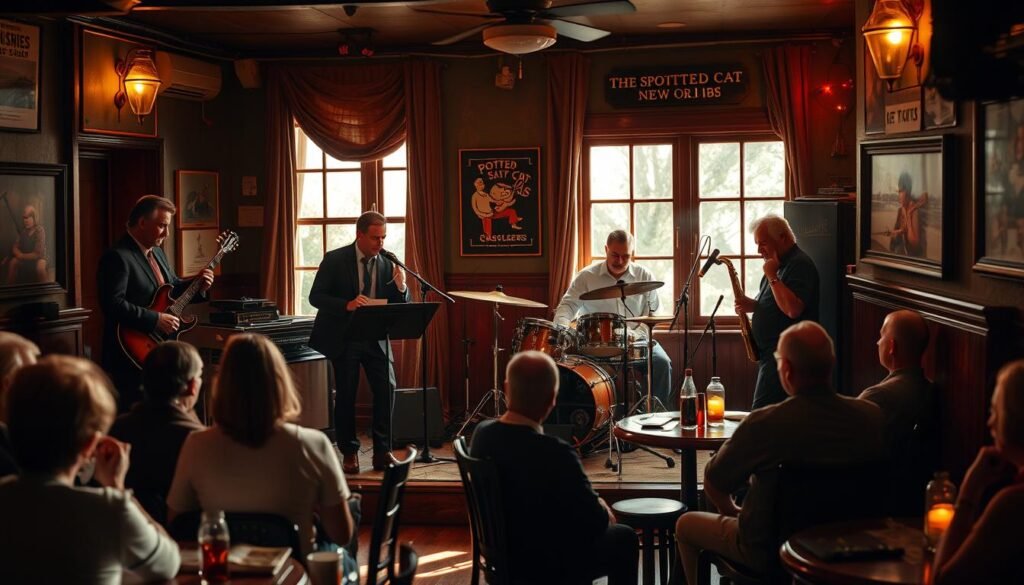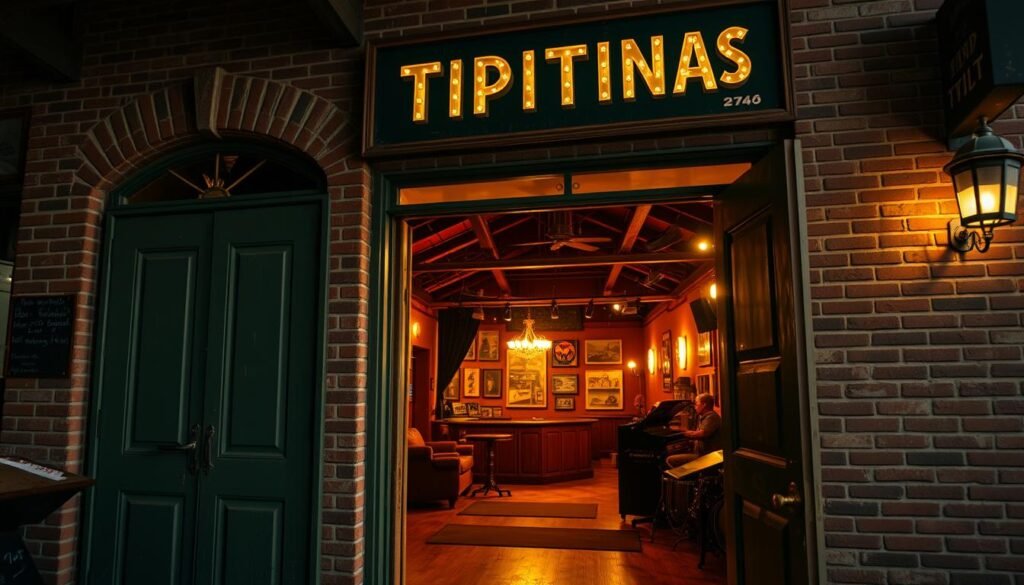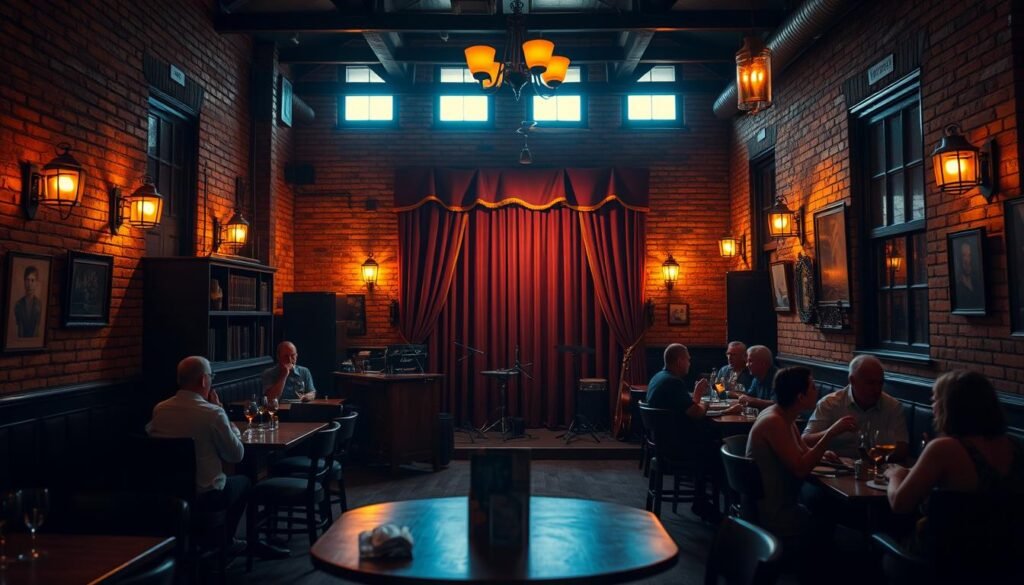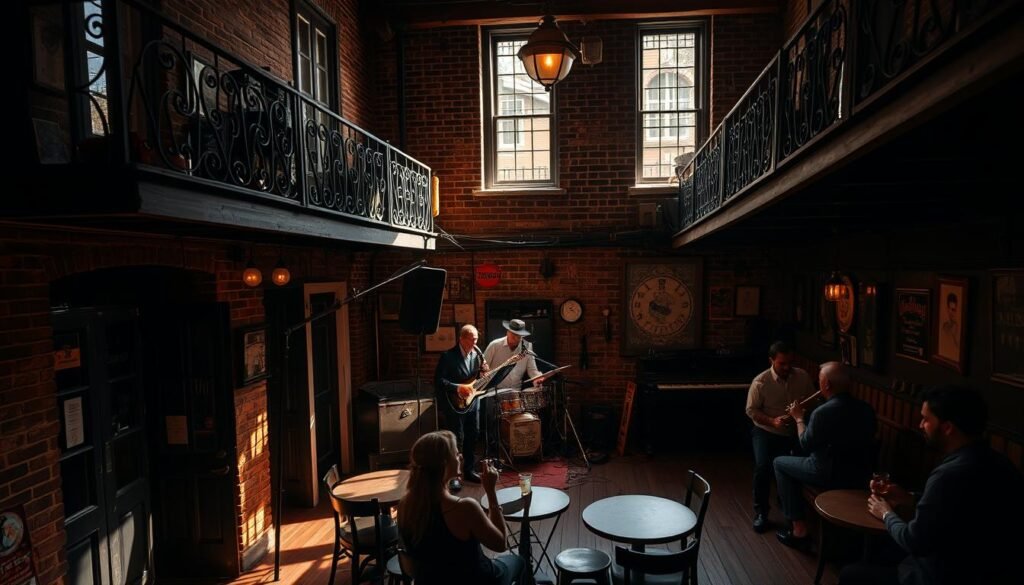As a local, I’m excited to share with you the magic of the bayou – a vibrant ecosystem that’s steeped in history and culture. The majestic cypress trees, diverse wildlife, and serene landscapes make it a treasure trove of natural wonders.
The bayou is more than just a body of water; it’s an experience waiting to be discovered. Whether you’re a nature lover, an adventure seeker, or simply someone who appreciates the beauty of the great outdoors, the bayou has something to offer. From outdoor adventures in louisiana to cultural insights, the bayou is a journey worth taking.
Key Takeaways
- Explore the bayou’s unique ecosystem and wildlife
- Discover the cultural significance of the bayou
- Enjoy outdoor adventures in the heart of Louisiana
- Experience the natural beauty of the cypress trees and landscapes
- Uncover the history and stories behind the bayou
Discovering the Allure of the Bayou
As I step into the misty veil of the bayou, I’m immediately enveloped in a world of mystery and natural beauty. The bayou is more than just a body of water; it’s a vibrant ecosystem that’s home to a diverse array of plants and animals.
What is a Bayou?
A bayou is a slow-moving body of water that’s connected to the Mississippi River. It’s a unique feature of the Louisiana landscape, shaped by the region’s history and geography.
The bayou’s tranquil waters are a perfect habitat for a wide variety of wildlife, from alligators and birds to fish and other aquatic creatures.
Unique Ecosystem of the Bayou
The bayou’s ecosystem is characterized by its cypress trees, Spanish moss, and a diverse array of plant and animal life. This delicate balance is a result of centuries of natural evolution.
The bayou is also a vital part of the local ecosystem, providing a habitat for countless species and helping to regulate the environment.
| Ecosystem Feature | Description | Importance |
|---|---|---|
| Cypress Trees | Tall, majestic trees that dominate the bayou landscape | Provide habitat for wildlife and help regulate water levels |
| Spanish Moss | A type of epiphyte that hangs from the trees, adding to the bayou’s mystique | Creates a unique microclimate and adds to the bayou’s aesthetic appeal |
| Wildlife | A diverse array of animals, including alligators, birds, and fish | Contributes to the bayou’s biodiversity and ecological balance |
Importance to Local Culture
The bayou has played a significant role in shaping the local culture, from the Native American tribes who first inhabited the area to the European settlers who arrived later.
Today, the bayou remains an integral part of the region’s identity, influencing the local music, art, and cuisine. For those interested in swamp tours in new orleans, the bayou offers a unique opportunity to experience the region’s natural beauty and rich cultural heritage.
Visitors can enjoy bayou wildlife encounters that provide a glimpse into the region’s diverse ecosystem. From kayaking adventures to eco-tours, there are many ways to explore the bayou and appreciate its beauty.
Top Bayou Tours in New Orleans
New Orleans’ bayou is a fascinating ecosystem, teeming with wildlife and rich in history, waiting to be discovered. One of the best ways to experience this enchanting environment is on a guided tour, which offers a unique perspective on the bayou’s natural and cultural significance.
With numerous tour operators in the area, visitors have a wide range of options to choose from, ensuring that there’s something for everyone. Whether you’re interested in the thrill of spotting alligators, the serenity of paddling through tranquil waters, or the excitement of exploring the bayou’s more remote areas, a tour can be tailored to your preferences.
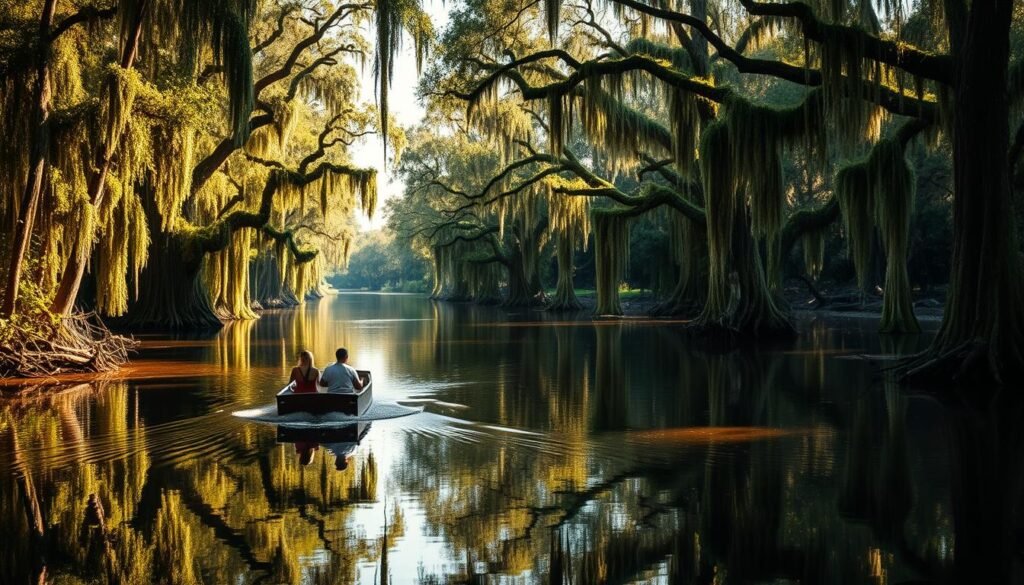
Swamp Boat Tours
For a classic bayou experience, consider a swamp boat tour. These tours take you deep into the bayou’s waters, offering a chance to see the region’s iconic cypress trees, Spanish moss, and an array of wildlife, including alligators, birds, and turtles. Knowledgeable guides provide insights into the bayou’s ecosystem, history, and folklore, making the experience both entertaining and educational.
Kayaking Adventures
If you’re looking for a more intimate experience with nature, kayaking adventures are an excellent choice. Paddling through the bayou’s calm waters allows you to get up close to the vegetation and wildlife, offering a serene and immersive experience. Many guided kayak tours are available, catering to different skill levels and interests, and providing a unique perspective on the bayou’s natural beauty.
Eco-Tours for Nature Lovers
Nature enthusiasts will appreciate the eco-tours designed to highlight the bayou’s diverse ecosystem. These tours often focus on the region’s flora and fauna, providing detailed information about the plants and animals that call the bayou home. From the majestic cypress trees to the tiny creatures living among the vegetation, eco-tours offer a comprehensive look at the bayou’s natural wonders.
By choosing the right tour, visitors can enjoy a memorable and enriching experience in the bayou, whether their interests lie in nature, history, or simply enjoying the beauty of the surroundings.
Wildlife Encounters in the Bayou
The bayou’s unique environment makes it a hotspot for diverse wildlife, from majestic birds to elusive reptiles. As a local, I’ve had the privilege of exploring these waters and discovering the rich wildlife that calls the bayou home.
One of the most thrilling experiences in the bayou is the opportunity to see its incredible array of wildlife up close. Whether you’re on a guided tour or venturing out on your own, the bayou is a wildlife enthusiast’s paradise.
Birds of the Bayou
The bayou is a haven for birdwatchers, with species ranging from the majestic bald eagles and ospreys to the colorful roseate spoonbills and Louisiana herons. The wetlands provide a perfect habitat for these birds, offering a mix of freshwater and mangrove forests that support a wide variety of avian life.

Reptiles and Amphibians
The bayou is also home to a range of reptiles and amphibians, including alligators, snakes, turtles, and frogs. These creatures thrive in the bayou’s waters, with the alligators being a particular highlight for many visitors.
Unique Mammals of the Region
Mammals such as raccoons, otters, and mink are common in the bayou, often seen washing their food or playing in the water’s edge. These encounters offer a glimpse into the bayou’s rich mammalian diversity.
To give you a better idea of the wildlife you might encounter, here’s a snapshot of some of the species found in the bayou:
| Category | Species | Notable Characteristics |
|---|---|---|
| Birds | Bald Eagles, Ospreys, Roseate Spoonbills | Majestic wingspans, sharp talons |
| Reptiles & Amphibians | Alligators, Snakes, Turtles, Frogs | Cold-blooded, semi-aquatic lifestyles |
| Mammals | Raccoons, Otters, Mink | Adaptable, playful, often seen near water |
Exploring the bayou offers a chance to connect with nature and witness the incredible diversity of wildlife that thrives in this unique ecosystem. Whether you’re a seasoned naturalist or just looking for an adventure, the bayou’s wildlife encounters are sure to leave a lasting impression.
Cultural Significance of the Bayou
The Bayou’s cultural significance is deeply rooted in its history, influencing the music, art, and legends of the region. For those seeking authentic Cajun experiences, the Bayou offers a unique cultural heritage that’s worth exploring.
As we delve into the Bayou’s cultural importance, it’s essential to understand its historical roots. The Bayou has been home to various communities, including the Cajun and Creole people, who settled in the area centuries ago. Their traditions, customs, and stories have been passed down through generations, shaping the region’s identity.
Historical Roots
The Bayou’s history dates back to the 18th century when French-speaking Acadians settled in the region. They brought with them their language, culture, and customs, which eventually blended with those of other communities, creating a unique cultural melting pot. As “the Bayou is a testament to the region’s rich cultural heritage”, it’s no wonder that it’s become a hub for cultural enthusiasts.
Visitors can explore the Bayou’s historical roots by visiting local museums, attending cultural events, or taking a guided tour. For instance, Cajun Bayou Culture Day Tours offer a glimpse into the region’s history and cultural significance.
Influence on Music and Art
The Bayou has been a source of inspiration for many musicians and artists. The region’s unique cultural heritage has influenced the development of various music genres, including jazz, zydeco, and Cajun music. As the legendary musician, Zachary Richard, once said,
“The Bayou is a place where music and culture come alive.”
The Bayou’s influence on art is also evident in the numerous galleries and studios showcasing local artists’ work. From paintings to sculptures, the Bayou’s beauty and mystique have inspired many creative pieces that reflect the region’s cultural identity.

Local Legends and Folklore
The Bayou is steeped in local legends and folklore, with stories of ghostly apparitions, mysterious creatures, and hidden treasures. These tales have been passed down through generations, adding to the Bayou’s mystique and allure. As a local, I’ve heard many of these stories, and they continue to captivate visitors to this day.
From the Rougarou to the La Llorona, the Bayou’s legends are a testament to the region’s rich cultural heritage. They add a layer of depth and complexity to the Bayou’s identity, making it a fascinating place to explore.
Best Times to Visit the Bayou
Whether you’re a nature lover or a festival enthusiast, the Bayou has a best time for you. The Bayou in New Orleans is a year-round destination, but the experience varies significantly with the seasons.
Seasonal Highlights
Spring and fall are considered ideal times to visit the Bayou. During the spring, the wildflowers are in bloom, creating a picturesque landscape. In the fall, the weather is mild, making it perfect for outdoor adventures like kayaking or swamp boat tours.
- Spring: Wildflowers bloom, and the scenery is particularly vibrant.
- Fall: Comfortable temperatures and a range of outdoor activities.
- Summer: Warm weather, ideal for water activities, but it can be humid.
- Winter: Cooler temperatures, fewer crowds, and a serene landscape.
Weather Considerations
The Bayou’s weather can be quite unpredictable. Summer months are characterized by high humidity and temperatures, while winters can be cool, especially in the mornings and evenings. It’s essential to check the weather forecast before heading out on a Bayou adventure.

Festivals and Events
New Orleans is renowned for its vibrant festivals and events, many of which take place near the Bayou. The fall season hosts numerous events, including the famous New Orleans Film Festival and Bayou Bacchanal. These events add a cultural richness to your Bayou experience.
| Season | Highlights | Weather |
|---|---|---|
| Spring | Wildflowers, vibrant scenery | Mild |
| Fall | Festivals, comfortable temperatures | Mild |
| Summer | Water activities | Hot and humid |
| Winter | Serene landscapes, fewer crowds | Cool |
By considering these factors, you can plan your visit to coincide with the experiences that matter most to you, making your New Orleans Bayou adventure truly unforgettable.
Tips for a Memorable Bayou Experience
As you prepare to explore the enchanting bayous of New Orleans, here are some insider tips to make your experience truly unforgettable. The bayou’s unique environment demands a certain level of preparation to ensure you can fully immerse yourself in its natural beauty.
What to Wear
When venturing into the bayou, comfort and practicality should be your top priorities. Wear comfortable clothing and shoes that can get wet, as you never know when you might encounter a particularly soggy spot or an unexpected dip in the water. The bayou can be warm and humid, so lightweight, breathable clothing is also a must.
Essential Items to Bring
To make the most of your bayou adventure, don’t forget to pack a few essential items. Sunscreen and insect repellent are must-haves to protect you from the sun and bugs. A camera is also a good idea, as you’ll want to capture the bayou’s breathtaking scenery and diverse wildlife. If you’re planning to take a guided tour, be sure to check with your tour operator for any specific gear or clothing recommendations.
| Item | Purpose |
|---|---|
| Sunscreen | Protects against UV rays |
| Insect Repellent | Keeps bugs at bay |
| Camera | Captures memories |
Photography Tips
For those with a passion for photography, the bayou offers endless opportunities to capture stunning images. Consider bringing a telephoto lens to get up close and personal with the bayou’s wildlife without disturbing them. Don’t forget to take a moment to simply enjoy the scenery – sometimes the best shots are the ones you didn’t plan for.
“The bayou is a place where the boundaries between reality and myth blur, where the cypress trees tower above, and the Spanish moss whispers secrets to the wind. It’s a photographer’s paradise, if you’re willing to slow down and let the beauty sink in.”
By being prepared and knowing what to expect, you can have a truly memorable bayou experience. Whether you’re exploring the bayou’s waters on a guided tour or venturing out on your own, the right mindset and preparation will make all the difference.
Culinary Delights: Taste of the Bayou
Indulge in the authentic Cajun experiences that define the Louisiana bayou’s gastronomic identity. The bayou region is renowned for its rich culinary heritage, a delicious blend of Creole and Cajun traditions that reflect the area’s cultural diversity.
Local Dishes to Try
When exploring the Louisiana bayou, there are several local dishes you shouldn’t miss. Some of the must-try options include:
- Gumbo: A hearty soup made with a combination of ingredients like okra, rice, and a variety of meats and seafood.
- Jambalaya: A one-pot dish filled with sausage, rice, and a mix of meats and seafood, showcasing the region’s culinary creativity.
- Beignets: These sweet fried dough pastries are covered in powdered sugar and are a perfect treat after a long day of exploring.
Popular Restaurants
The bayou area is home to numerous restaurants serving authentic Creole and Cajun cuisine. Some popular spots include:
- Dooky Chase’s Restaurant: Known for its gumbo z’herbes and other Creole classics.
- Cafe Maspero: Offers a cozy atmosphere and a menu featuring local favorites.
- Jacques-Imo’s Cafe: A vibrant restaurant serving creative Creole cuisine.
Cajun and Creole Influences
The cuisine of the bayou is deeply influenced by its cultural heritage, with both Cajun and Creole traditions playing significant roles. Cajun cuisine is known for its rustic, hearty dishes, often made with locally sourced ingredients like crawfish, rice, and andouille sausage. Creole cuisine, on the other hand, is characterized by its sophisticated blend of French, Spanish, African, and Native American flavors, often featuring a mix of meats and seafood in rich sauces.
Understanding these influences can enhance your appreciation of the bayou’s culinary delights, offering a taste of the region’s history and culture with every bite.
Sustainable Tourism in the Bayou
Sustainable tourism is not just a buzzword; it’s a necessity when visiting the Bayou to ensure its natural charm remains intact. As visitors, we have a responsibility to protect the Bayou’s delicate ecosystem.
Responsible Tour Practices
Choosing the right tour operator is crucial. Look for operators that adhere to eco-friendly practices and support local conservation efforts. Many best eco tours in New Orleans are led by knowledgeable guides who not only show you the Bayou’s hidden gems but also share insights into its ecosystem and the importance of preserving it.
Conservation Efforts
The Bayou is home to a diverse range of flora and fauna, some of which are found nowhere else on Earth. Conservation efforts are underway to protect this biodiversity. From wildlife conservation projects to habitat restoration, there are numerous initiatives that visitors can support.
How to Support Local Communities
Supporting local communities is a vital aspect of sustainable tourism. By choosing local guides, accommodations, and dining options, visitors can contribute to the local economy. This not only enhances the travel experience by providing a more authentic connection to the place but also helps in preserving the cultural heritage of the Bayou.
By embracing sustainable tourism practices, we can ensure that the Bayou remains a vibrant and healthy ecosystem for generations to come. It’s about making conscious choices that benefit both the environment and the local community.
Family-Friendly Bayou Activities
New Orleans Bayou is a treasure trove of family-friendly activities, ensuring a memorable experience for everyone. The Bayou offers a unique blend of adventure, education, and relaxation that’s suitable for all ages.
Kids’ Delight: Bayou Tours
Kid-friendly tours are a great way to introduce your little ones to the wonders of the Bayou. These tours are designed to be engaging and entertaining, with guides who are skilled at sharing their knowledge in a fun and interactive way.
Many tour operators offer family-friendly packages that include activities such as:
- Guided boat tours with commentary that’s suitable for children
- Interactive games and quizzes to keep kids engaged
- Opportunities to spot wildlife, such as alligators, birds, and fish
Learning Adventures: Educational Experiences
The Bayou is not just a place for adventure; it’s also a rich educational resource. Many organizations offer educational programs and activities that are designed to teach children about the Bayou’s ecosystem, history, and cultural significance.
Some of the educational experiences available include:
| Program | Age Group | Description |
|---|---|---|
| Bayou Ecology | 8-12 years | Learn about the plants and animals that call the Bayou home |
| History of the Bayou | 10-14 years | Explore the rich history and cultural heritage of the Bayou |
| Wildlife Conservation | 12-16 years | Understand the importance of conservation efforts in the Bayou |
Outdoor Adventures for All Ages
The Bayou offers a range of outdoor activities that are suitable for families with children of all ages. From kayaking and canoeing to hiking and birdwatching, there’s something for everyone to enjoy.
Some popular outdoor adventures include:
- Kayaking through the Bayou’s tranquil waters
- Nature walks along the Bayou’s scenic trails
- Birdwatching to spot the diverse birdlife
By incorporating these activities into your Bayou visit, you can create a fun and memorable experience for your family.
Best Places to Stay Near the Bayou
The Bayou’s enchanting surroundings are just the beginning; your accommodations can elevate your adventure. Whether you’re looking to immerse yourself in nature or enjoy the luxuries of a high-end resort, there’s a wide range of options to choose from near the New Orleans Bayou.
Lodging Options
From budget-friendly motels to luxury resorts, the area around the Bayou offers a diverse array of lodging options. You can choose to stay in a hotel that provides modern amenities or opt for a more intimate bed and breakfast experience. As a local, I can attest that many of these establishments are within a short drive or boat ride from the Bayou’s main attractions.
For those looking for a more authentic experience, consider staying at a bayou cabin, which offers a unique chance to live among the cypress trees and observe local wildlife up close.
Campsites and Cabins
For the more adventurous, campsites and cabins near the Bayou provide an opportunity to connect with nature. Many of these sites offer amenities such as guided tours, fishing spots, and hiking trails, making them ideal for families or nature enthusiasts.
“Camping under the stars with the sounds of the Bayou as your lullaby is an experience like no other.” – This is a sentiment often echoed by visitors who choose to camp near the Bayou.
Unique Stays
If you’re looking for something out of the ordinary, consider one of the unique stays available in the area. From floating homes to historic mansions turned into B&Bs, there’s no shortage of unusual accommodations that can make your stay near the Bayou truly memorable.
As you plan your trip, remember that the right accommodations can significantly enhance your New Orleans Bayou experiences. With so many options available, you’re sure to find the perfect fit for your needs and budget.
Planning Your Bayou Adventure
Now that you’ve explored the enchanting world of New Orleans’ Bayou, it’s time to start planning your trip. With so many great activities and attractions to discover, creating an unforgettable experience is easier than you think.
Charting Your Course
Begin by crafting an itinerary that includes the top Bayou experiences you don’t want to miss – from guided kayak tours in New Orleans to exploring the region’s rich cultural heritage. Be sure to leave some room for spontaneity, as some of the best moments often come from unplanned detours.
Getting Around
When it comes to transportation, you’ve got options. Renting a car gives you the freedom to explore at your own pace, while guided tours can provide a hassle-free experience, allowing you to sit back and enjoy the scenery.
Making Memories
To make the most of your visit, consider the best times to visit the Bayou, and don’t be afraid to try new things. With a little planning, you’ll be well on your way to creating lifelong memories of your Bayou adventure. So, what are you waiting for? Start planning your trip today and get ready to immerse yourself in the magic of the Bayou.
FAQ
What is the best time to visit the New Orleans Bayou?
The best time to visit the bayou is during the spring and fall, when the weather is mild and there are many activities and events to enjoy. Summer can be hot and humid, while winters can be cool and quiet.
What kind of wildlife can I expect to see on a bayou tour?
The bayou is home to a diverse range of wildlife, including alligators, birds, turtles, and fish. You may also spot raccoons, otters, and other mammals on a guided tour.
Are bayou tours suitable for families with young children?
Yes, many bayou tours are suitable for families with young children. Some tour operators offer kid-friendly tours and activities, so be sure to check ahead of time to confirm.
Can I kayak or canoe through the bayou?
Yes, kayaking and canoeing are popular ways to explore the bayou. Many tour operators offer guided kayak tours, or you can rent equipment and paddle on your own.
What should I wear on a bayou tour?
Wear comfortable clothing and shoes that can get wet. It’s also a good idea to bring a hat, sunscreen, and insect repellent to protect yourself from the sun and bugs.
How do I support local communities during my visit to the bayou?
You can support local communities by choosing responsible tour operators, visiting local restaurants and shops, and participating in eco-friendly activities. This helps to promote sustainable tourism and preserve the bayou’s natural beauty.
Are there any unique lodging options available near the bayou?
Yes, there are many unique lodging options available near the bayou, including cabins, vacation rentals, and eco-lodges. Some of these options offer stunning views of the bayou and surrounding wetlands.
Can I see alligators in the bayou?
Yes, the bayou is home to a large population of alligators. You can spot them on a guided tour, especially during the warmer months when they’re more active.
What kind of food can I expect to find in the bayou region?
The bayou region is known for its delicious Creole and Cajun cuisine, with popular dishes like gumbo, jambalaya, and beignets. Be sure to try some of the local specialties during your visit.
How can I plan a memorable bayou adventure?
To plan a memorable bayou adventure, start by creating an itinerary that includes the activities and attractions you want to experience. Consider renting a car or choosing a guided tour to make the most of your visit.

